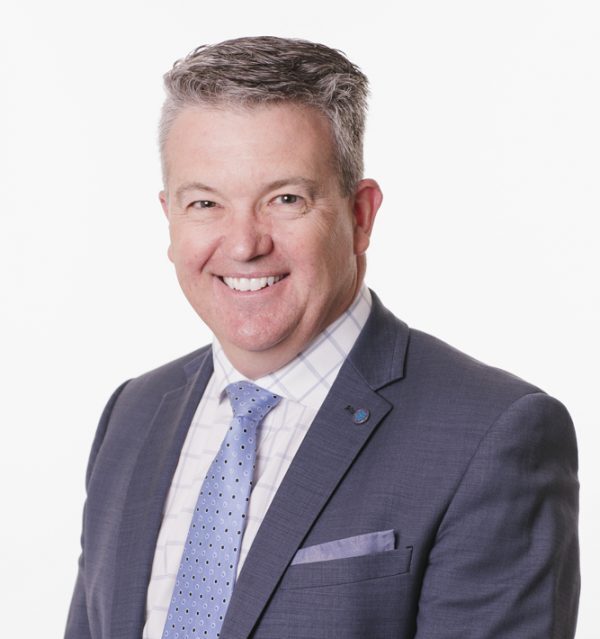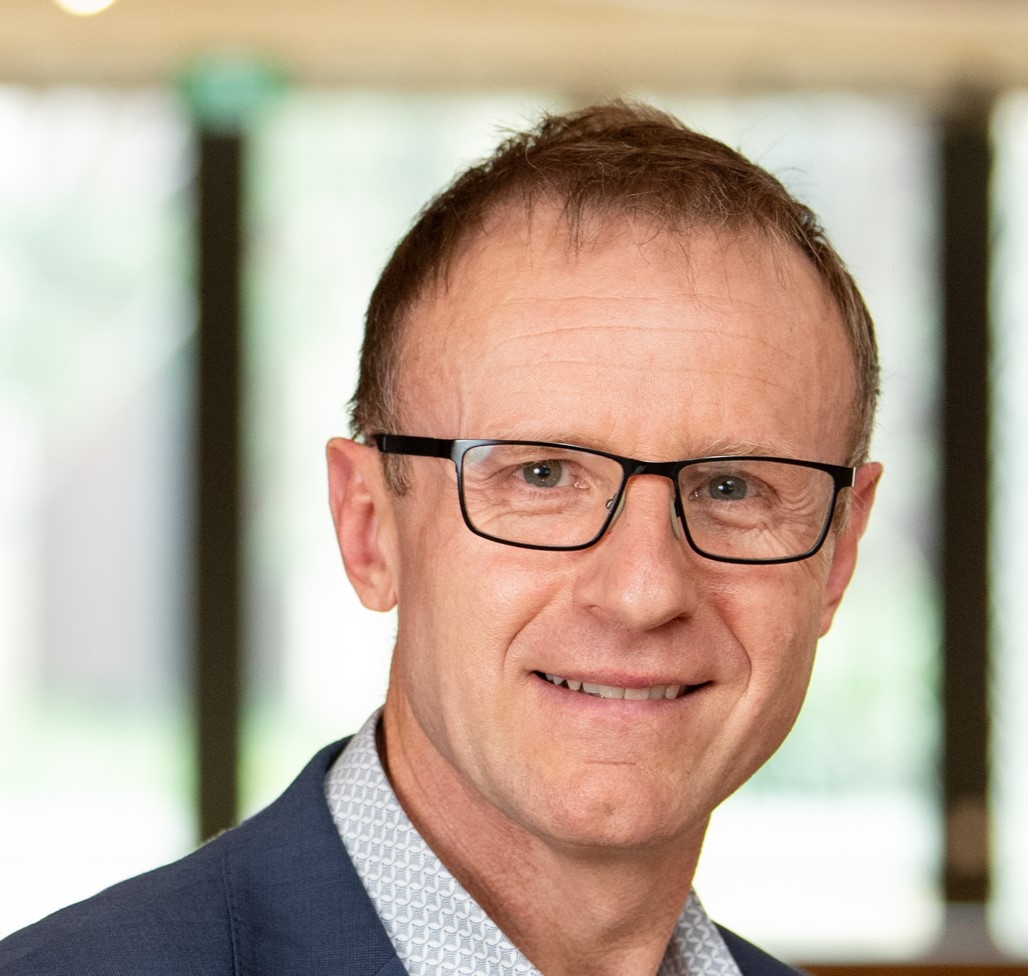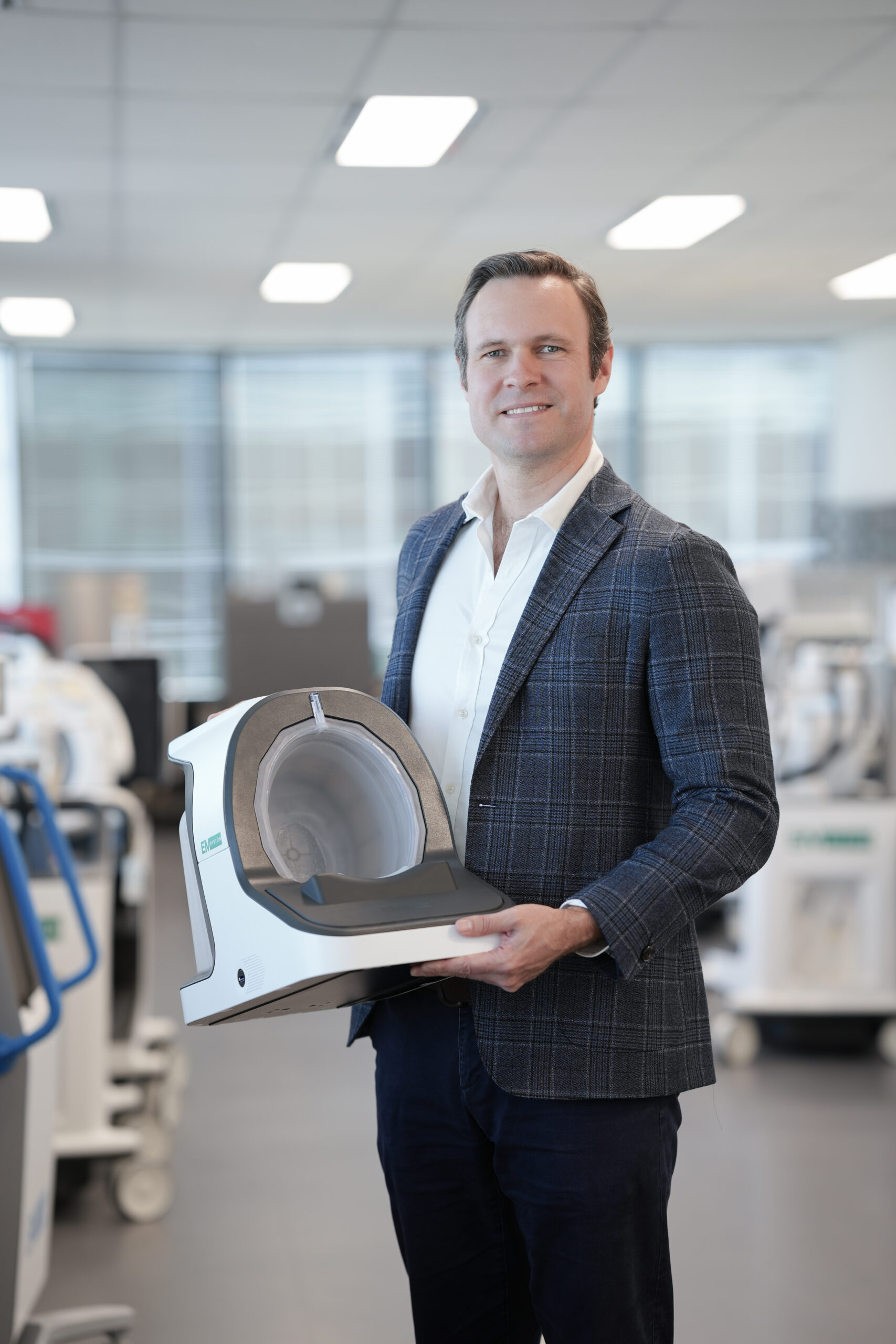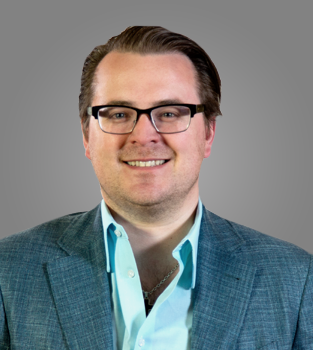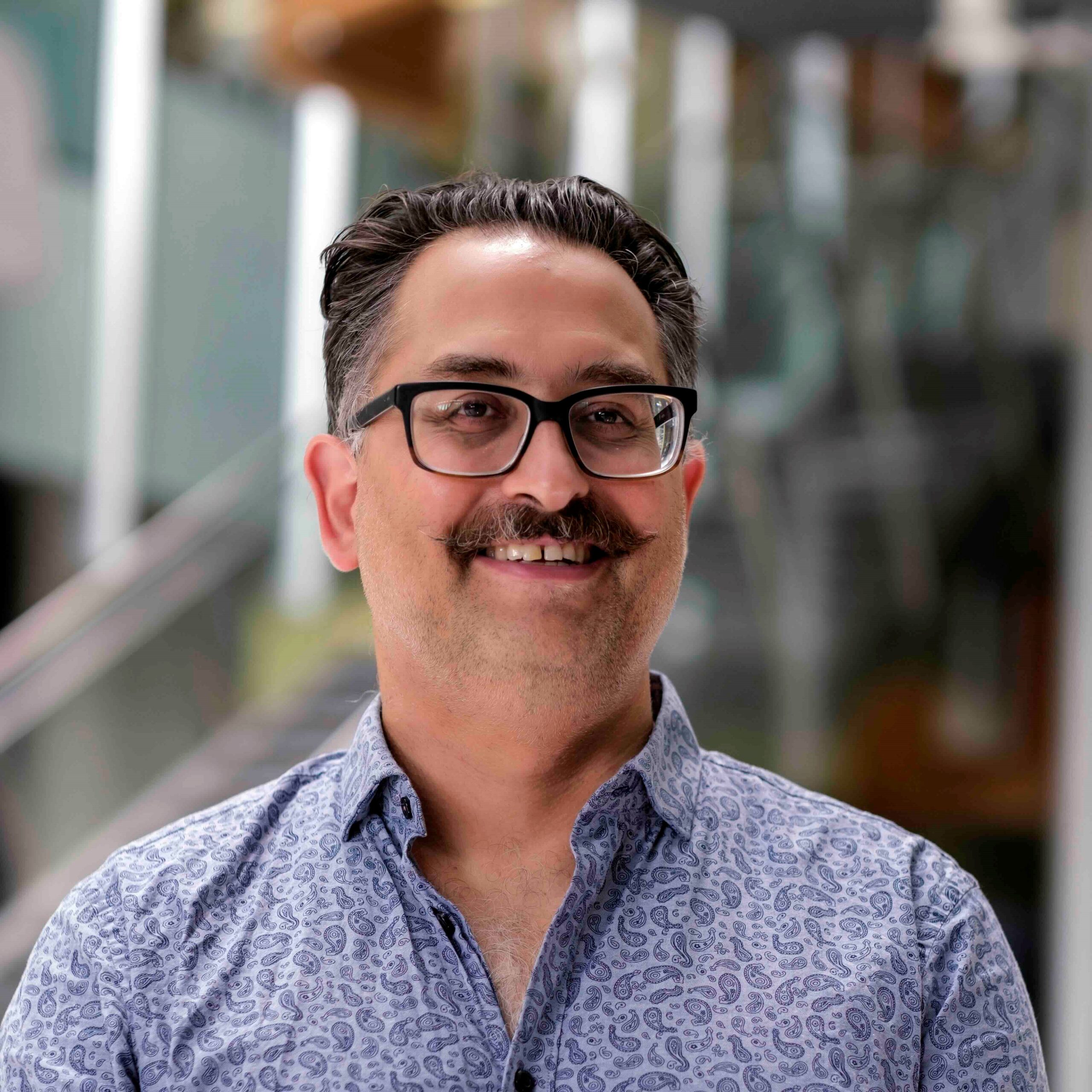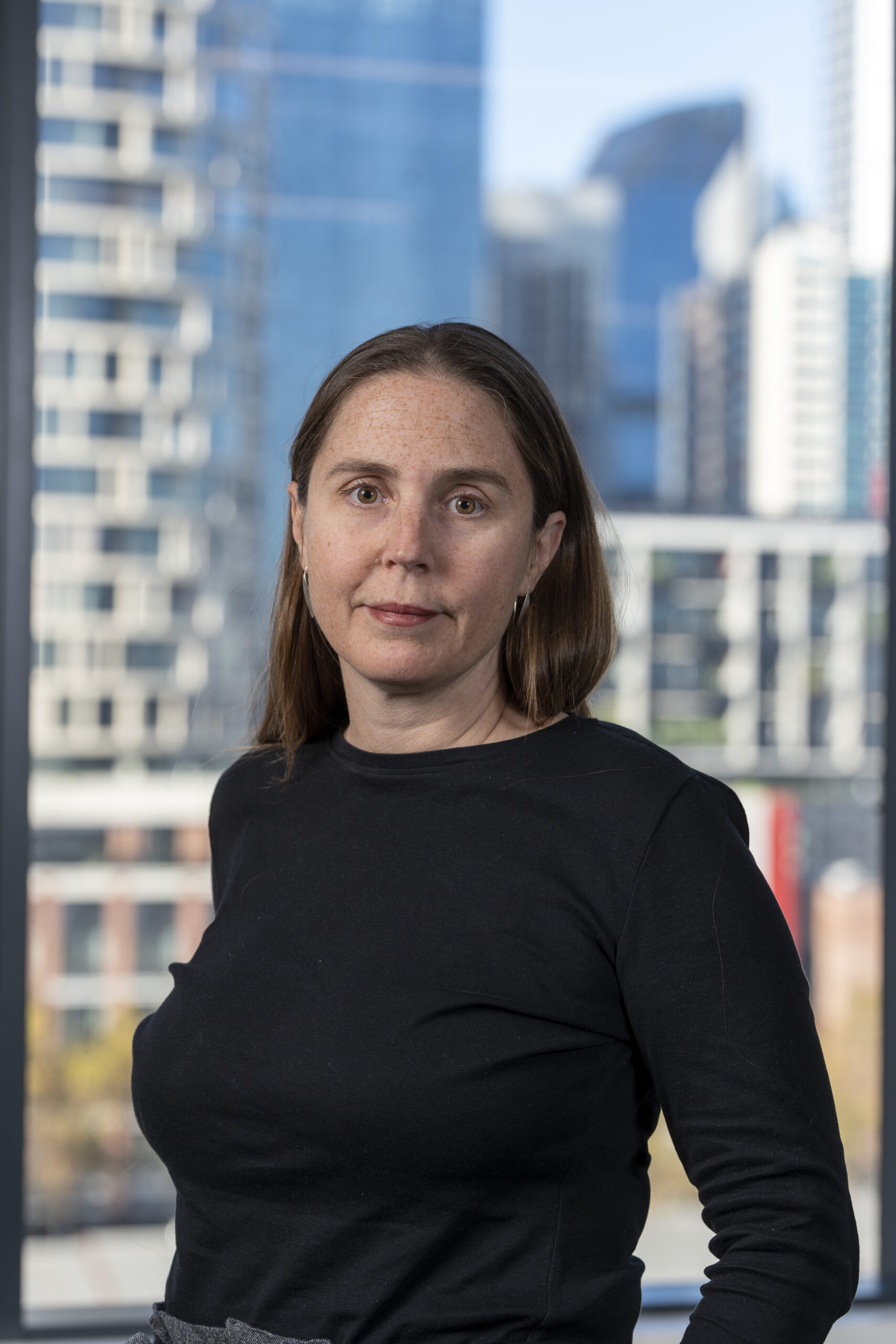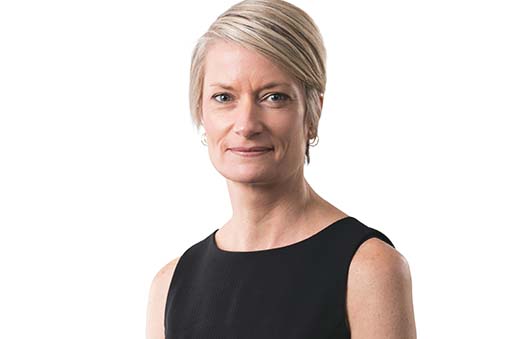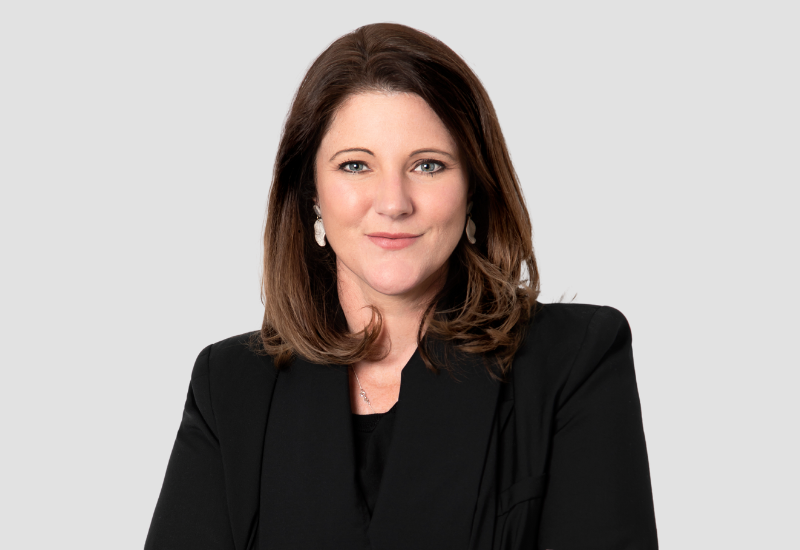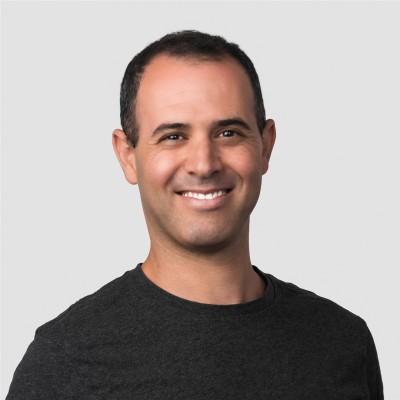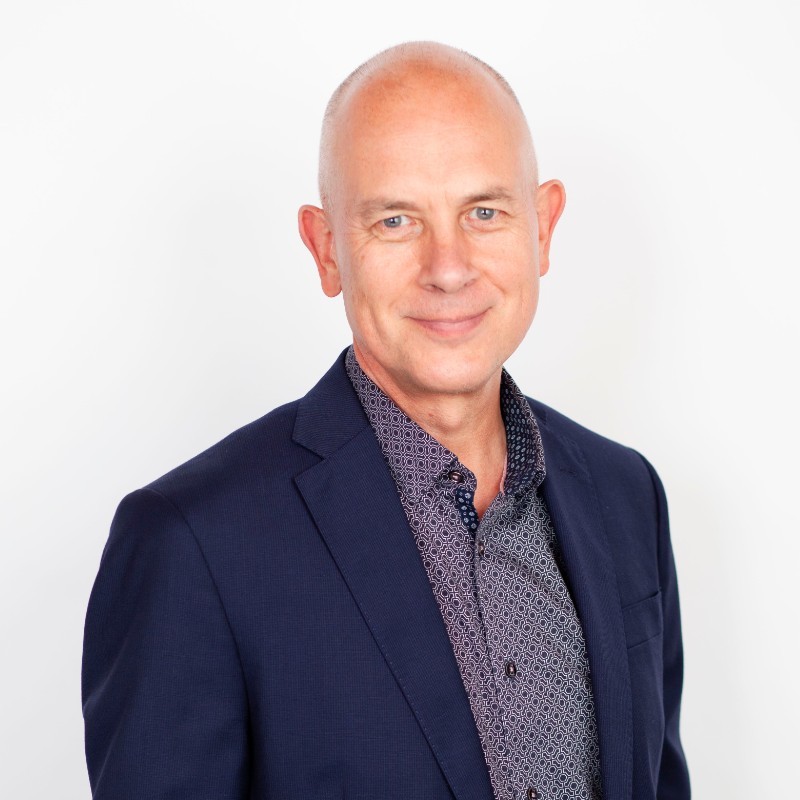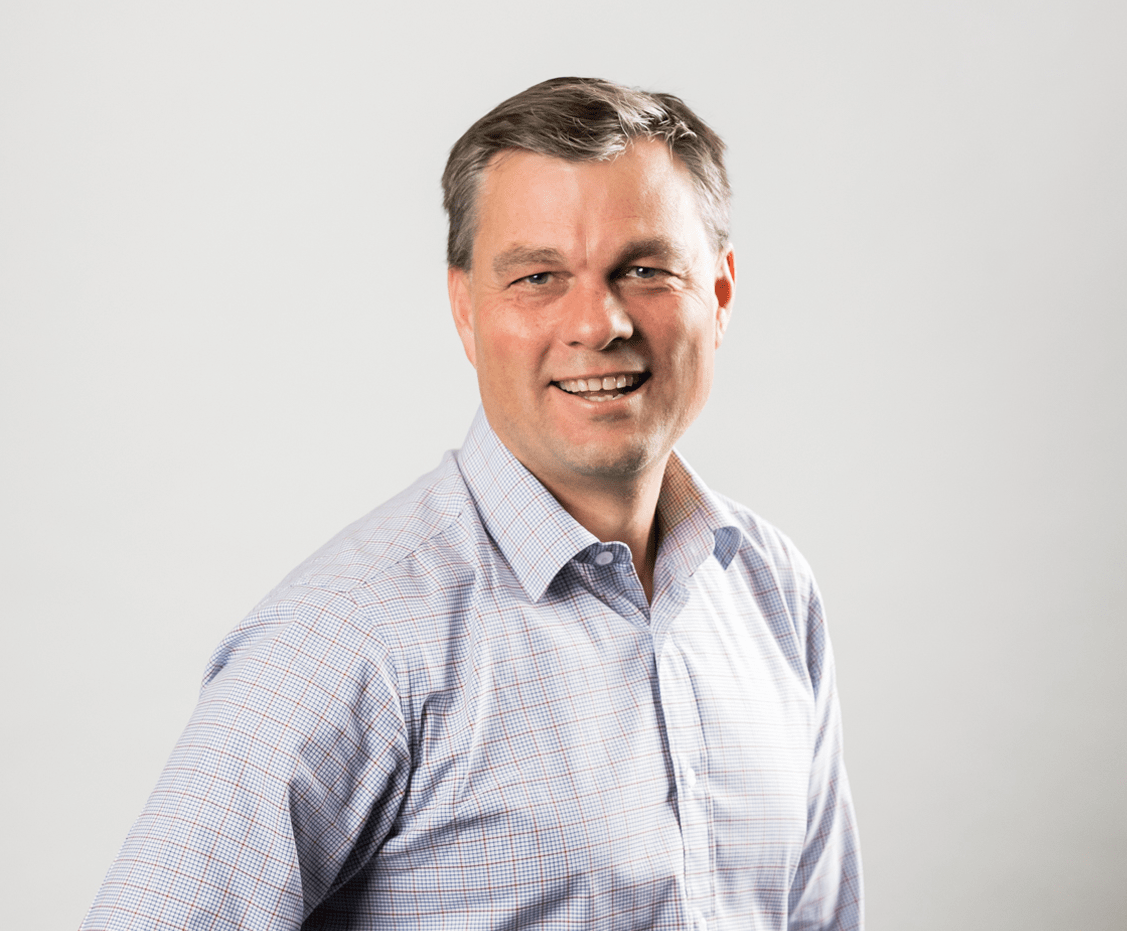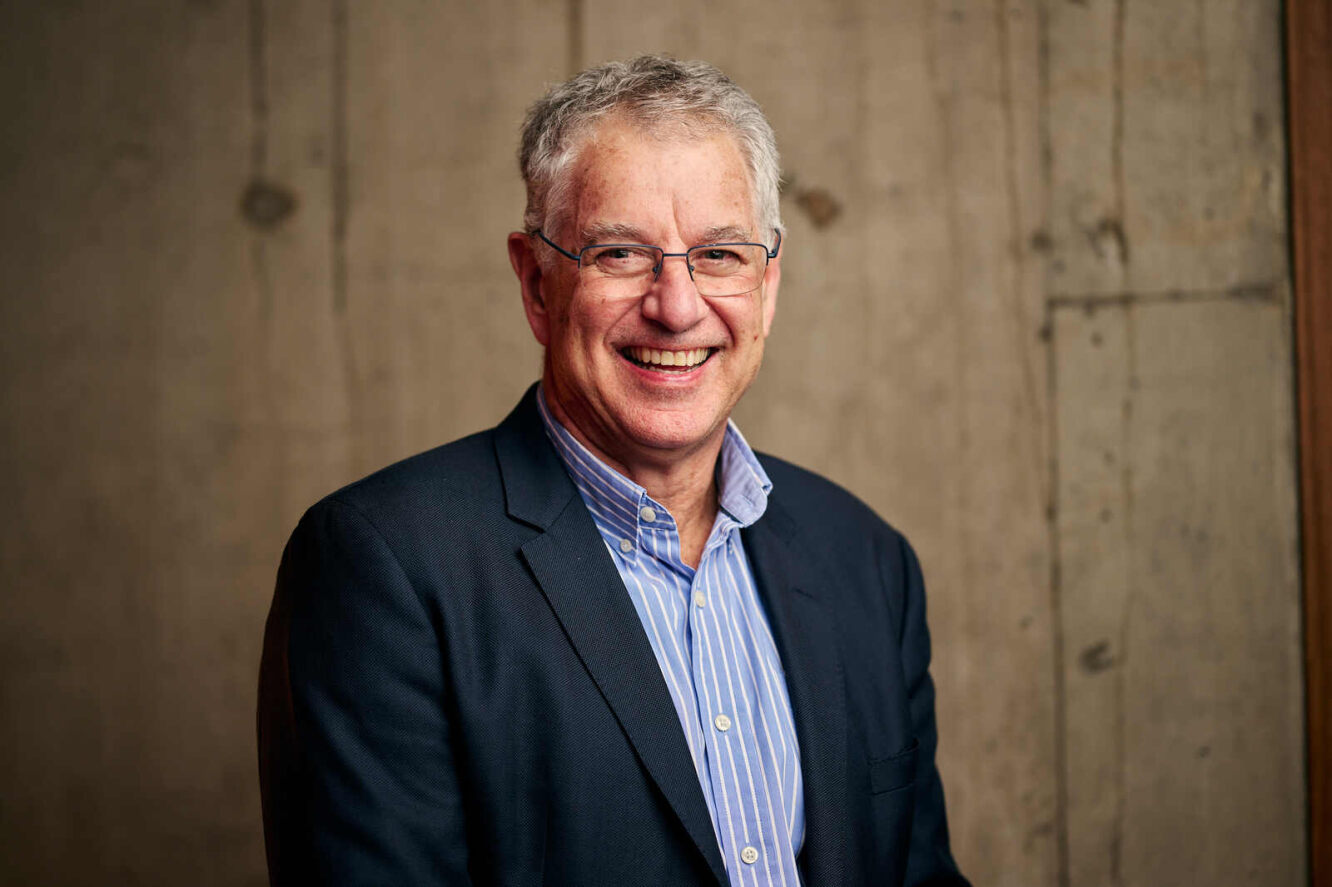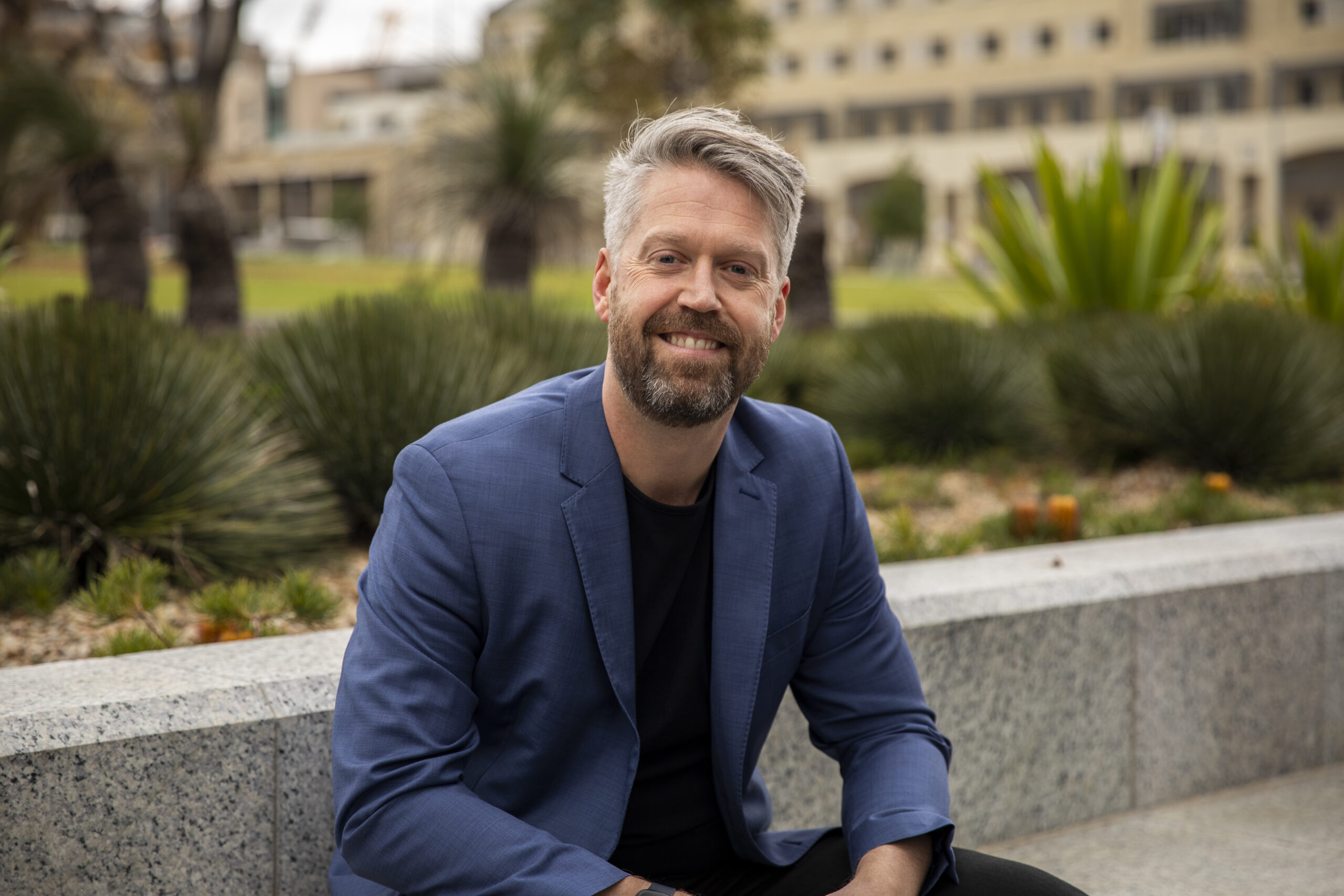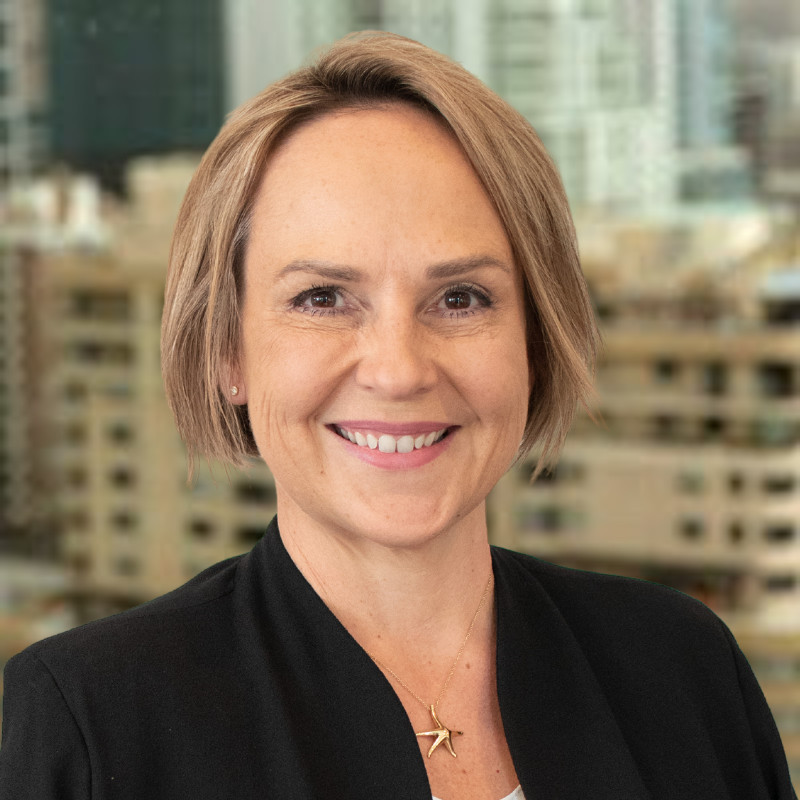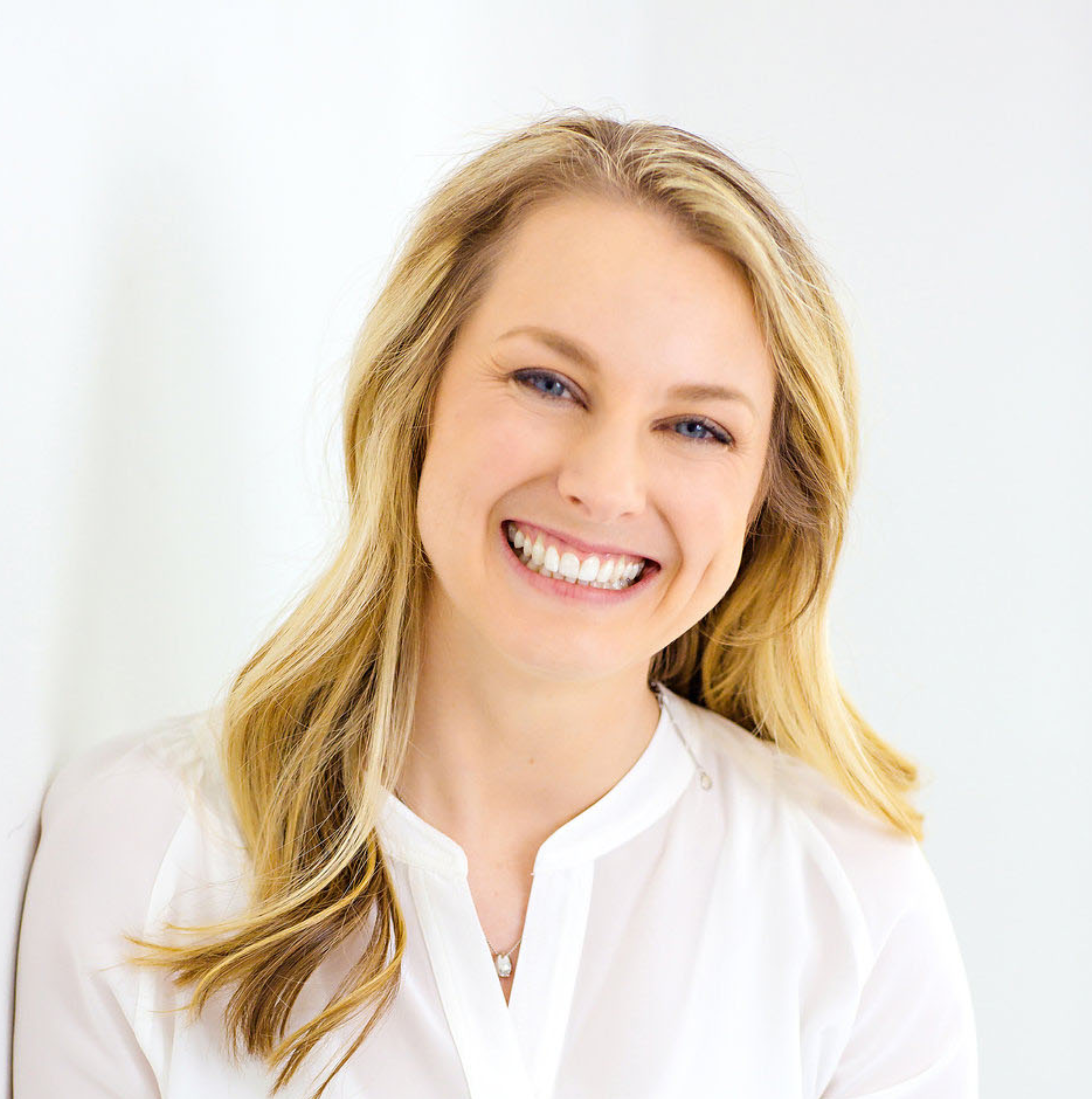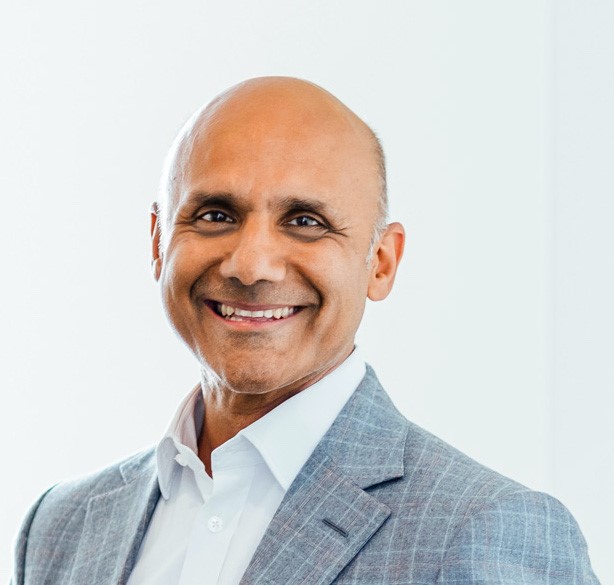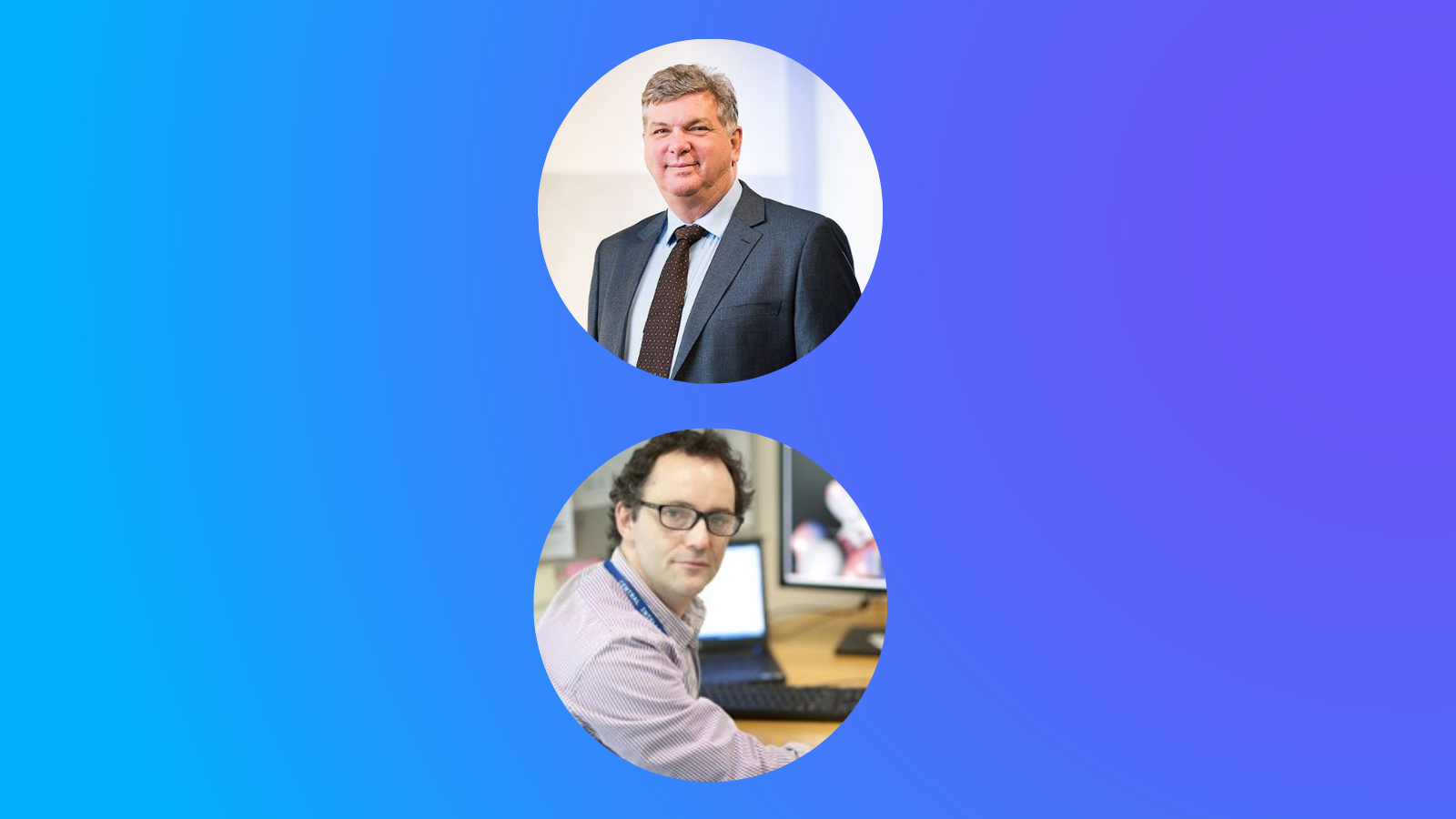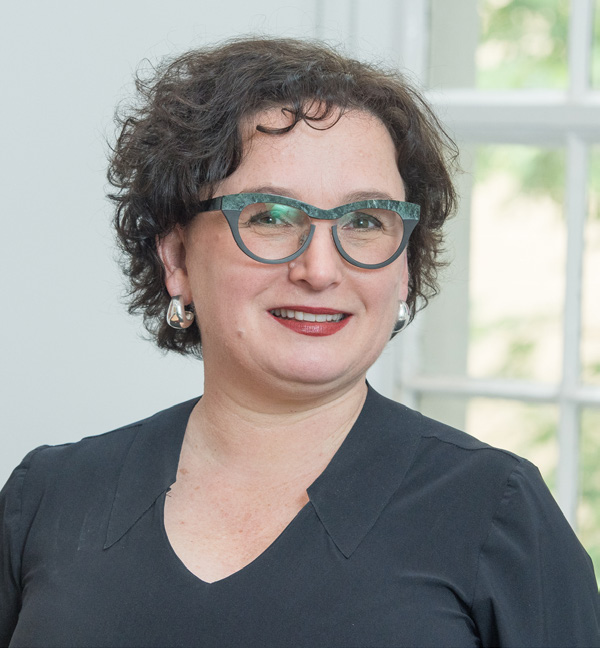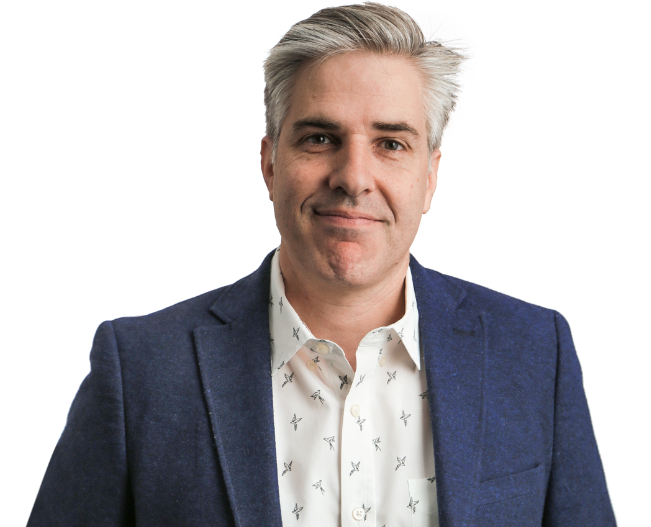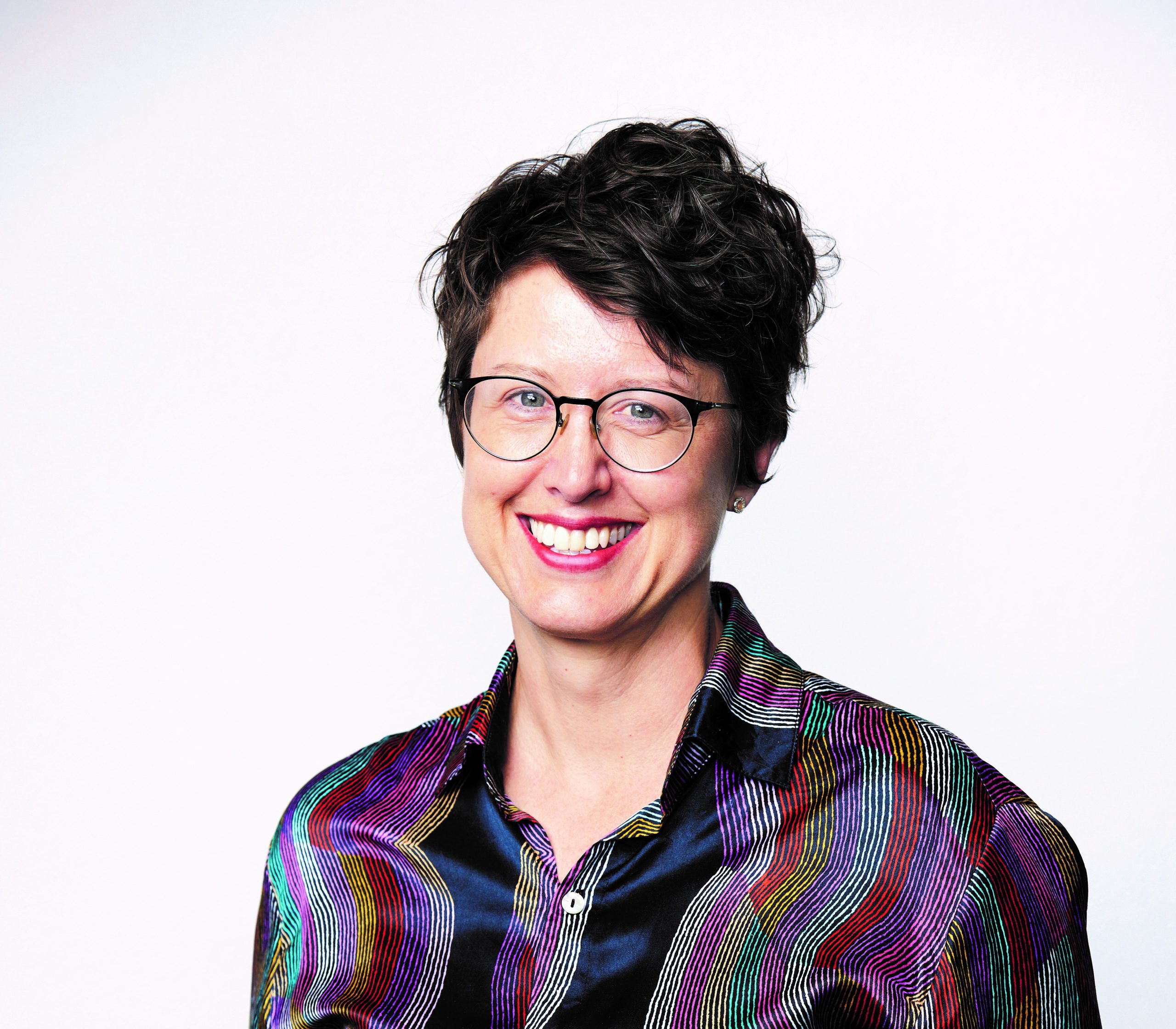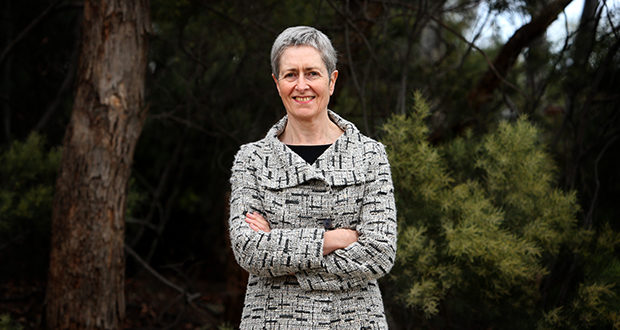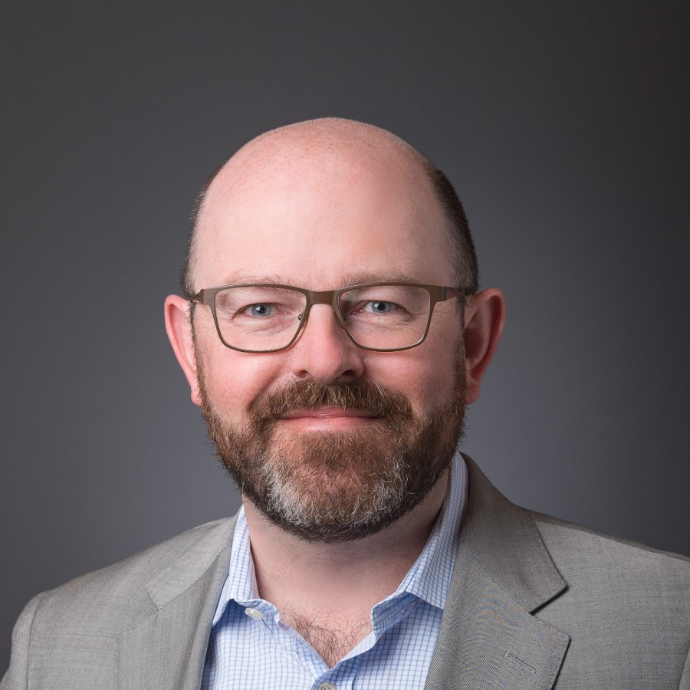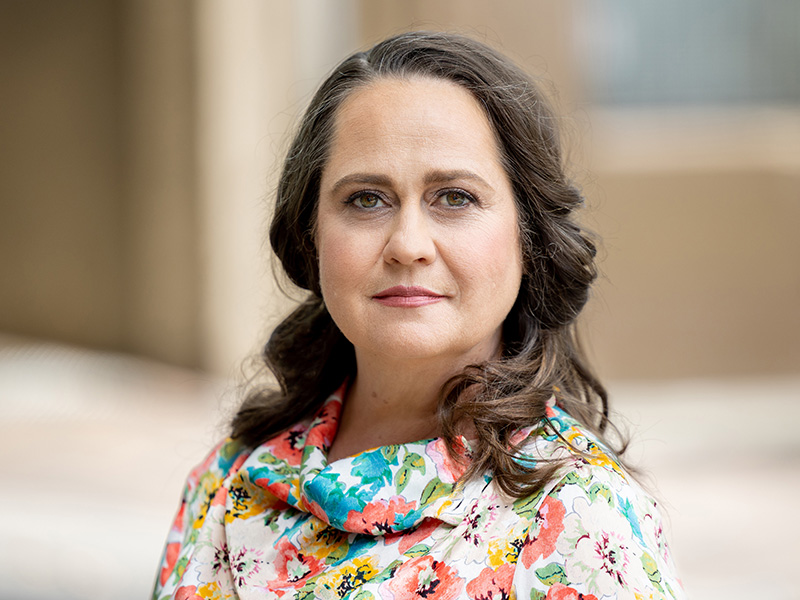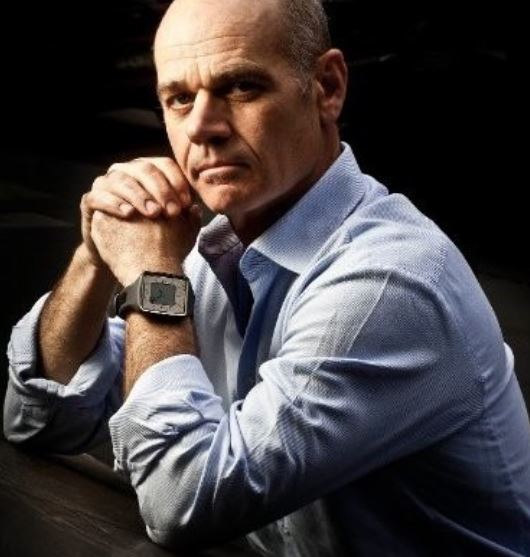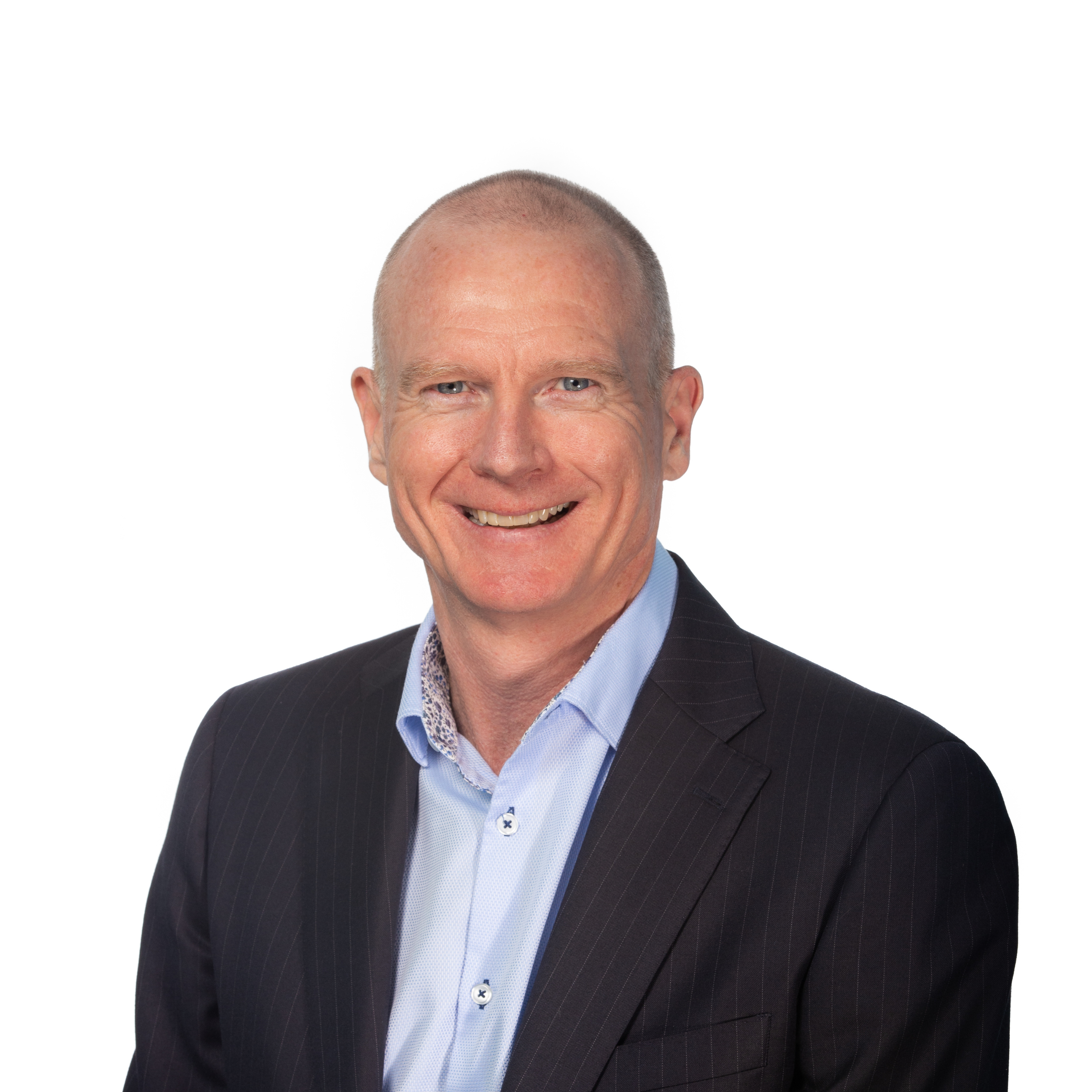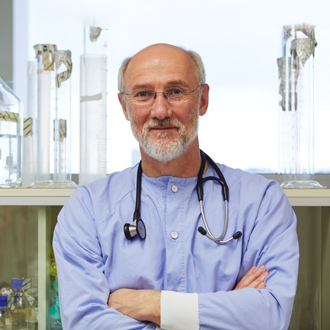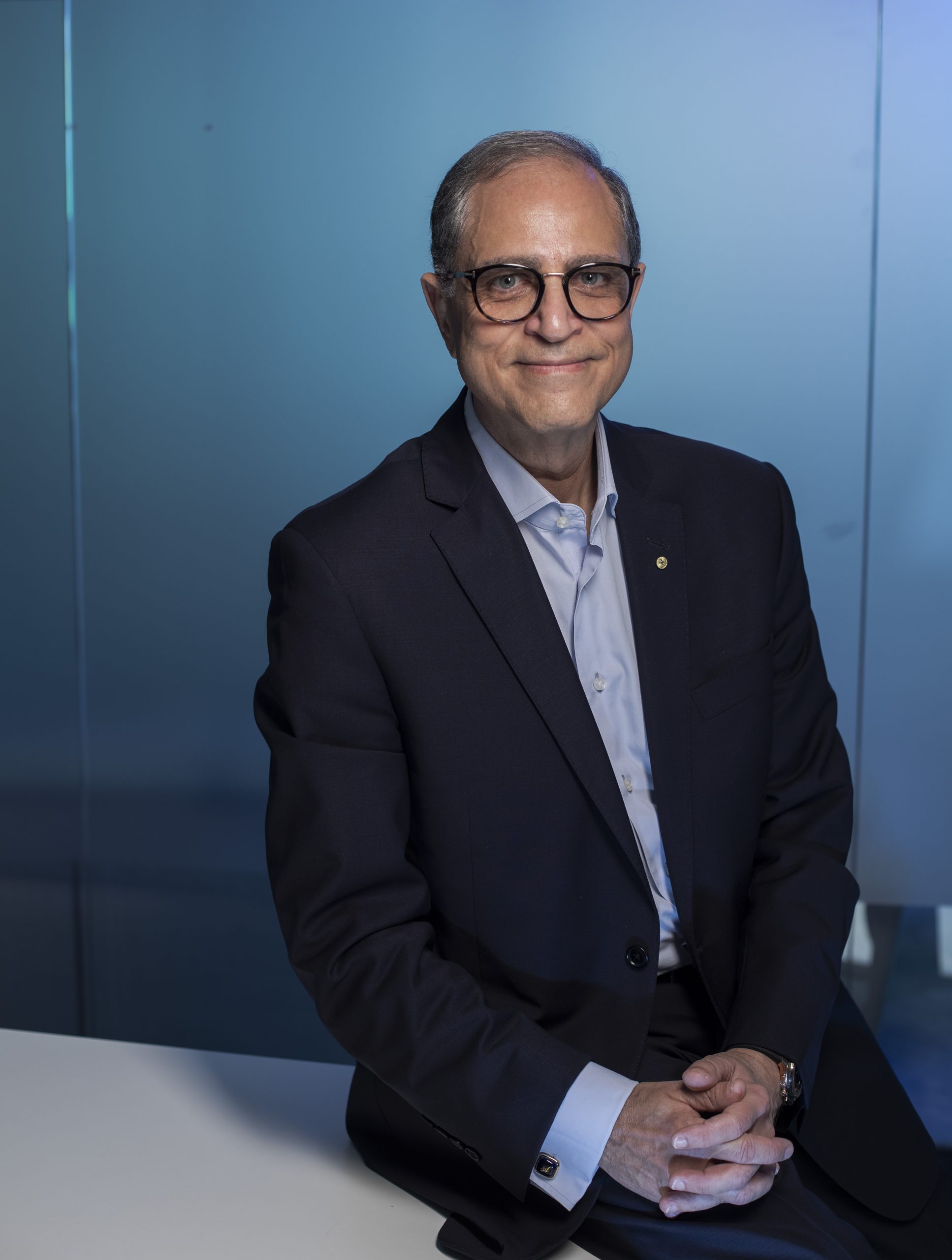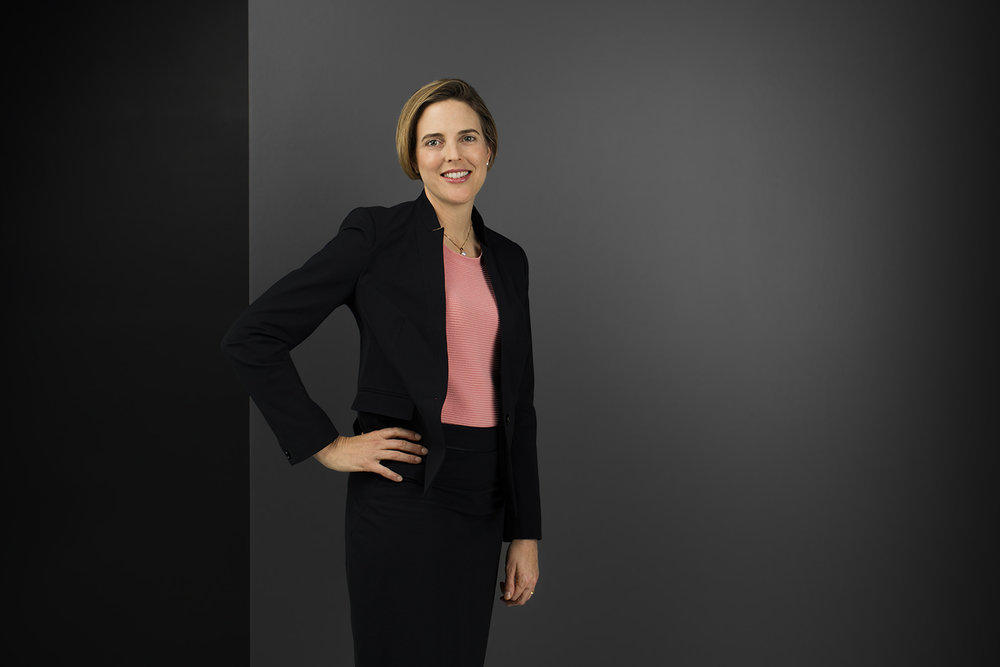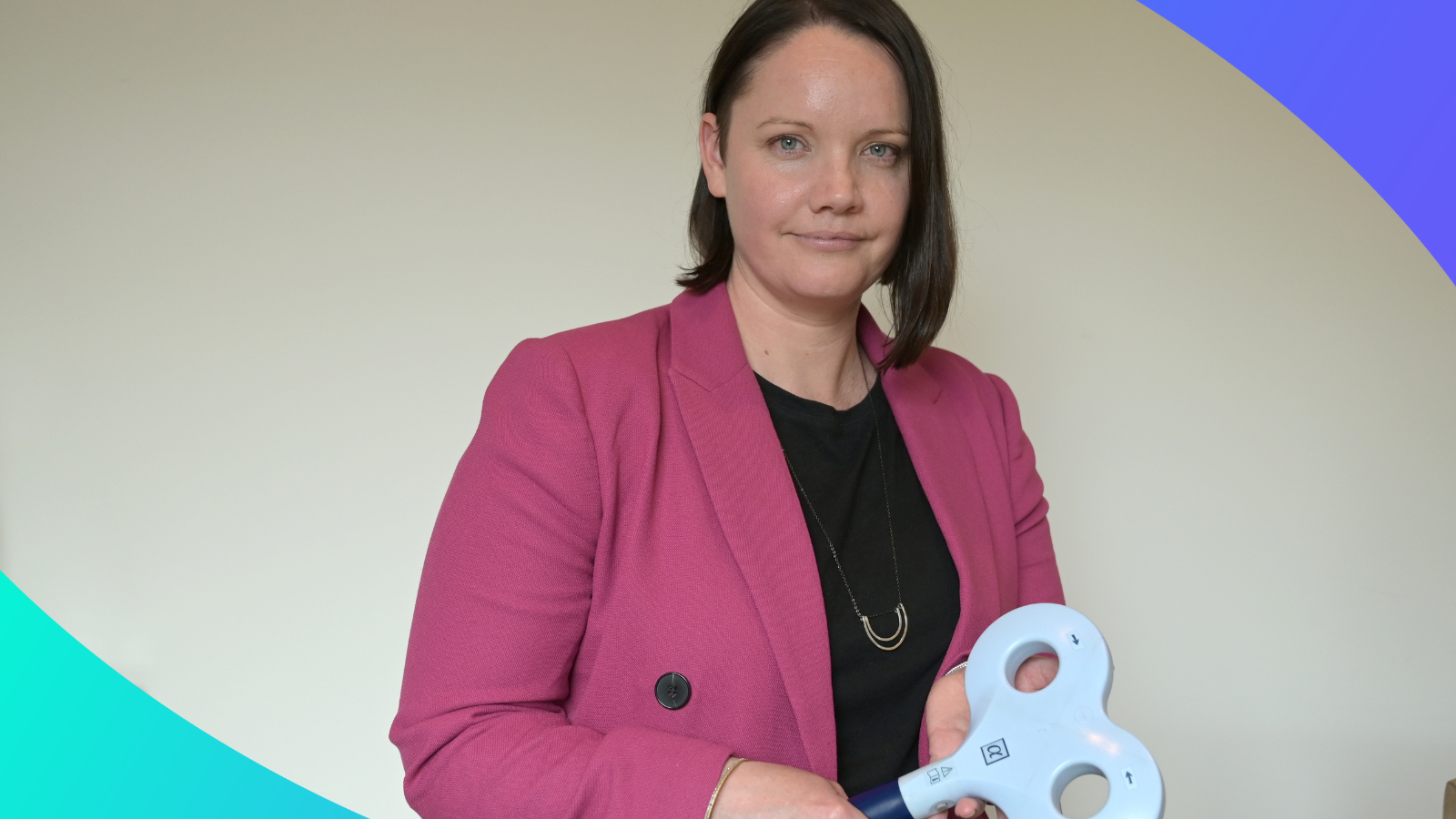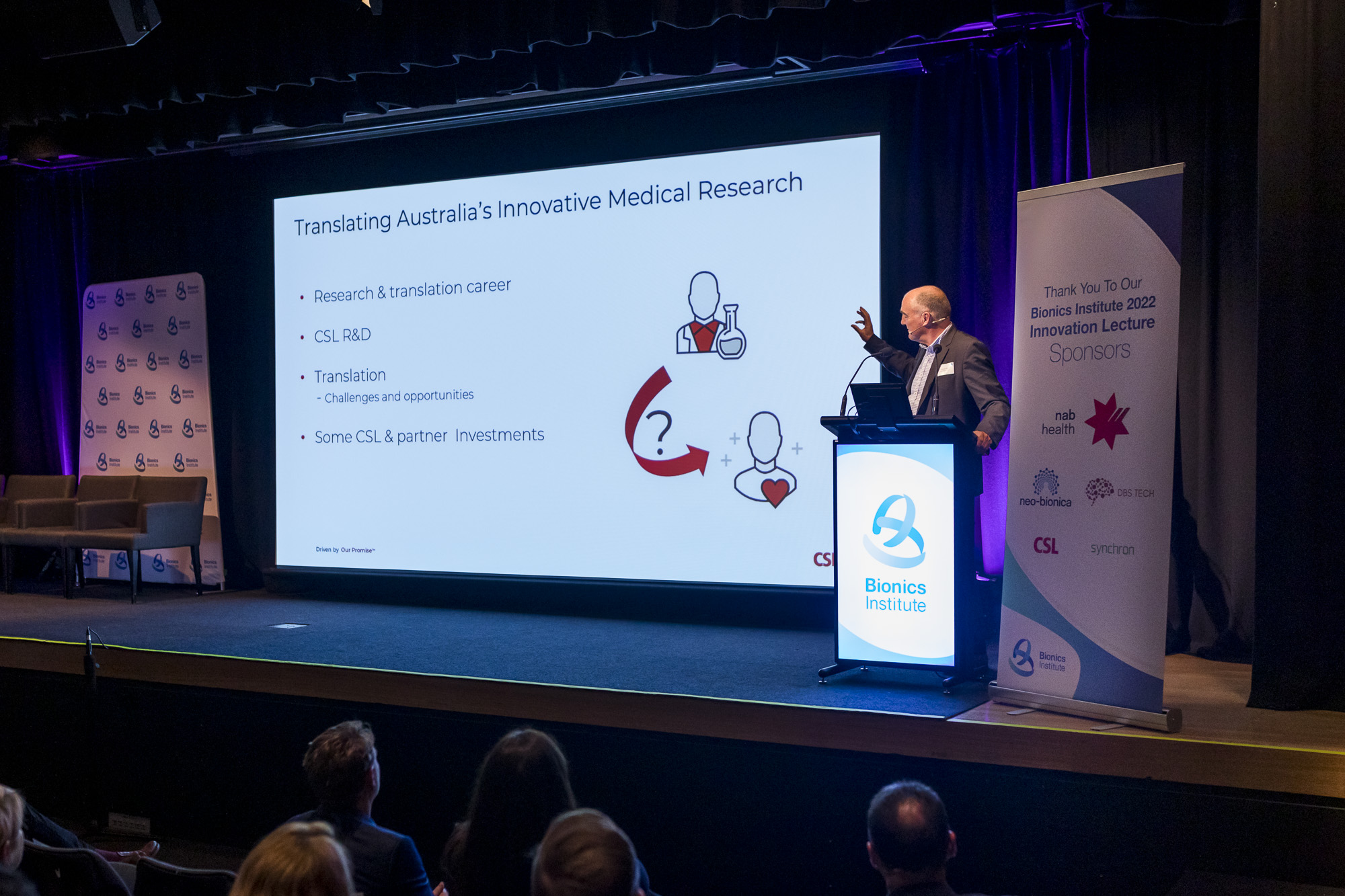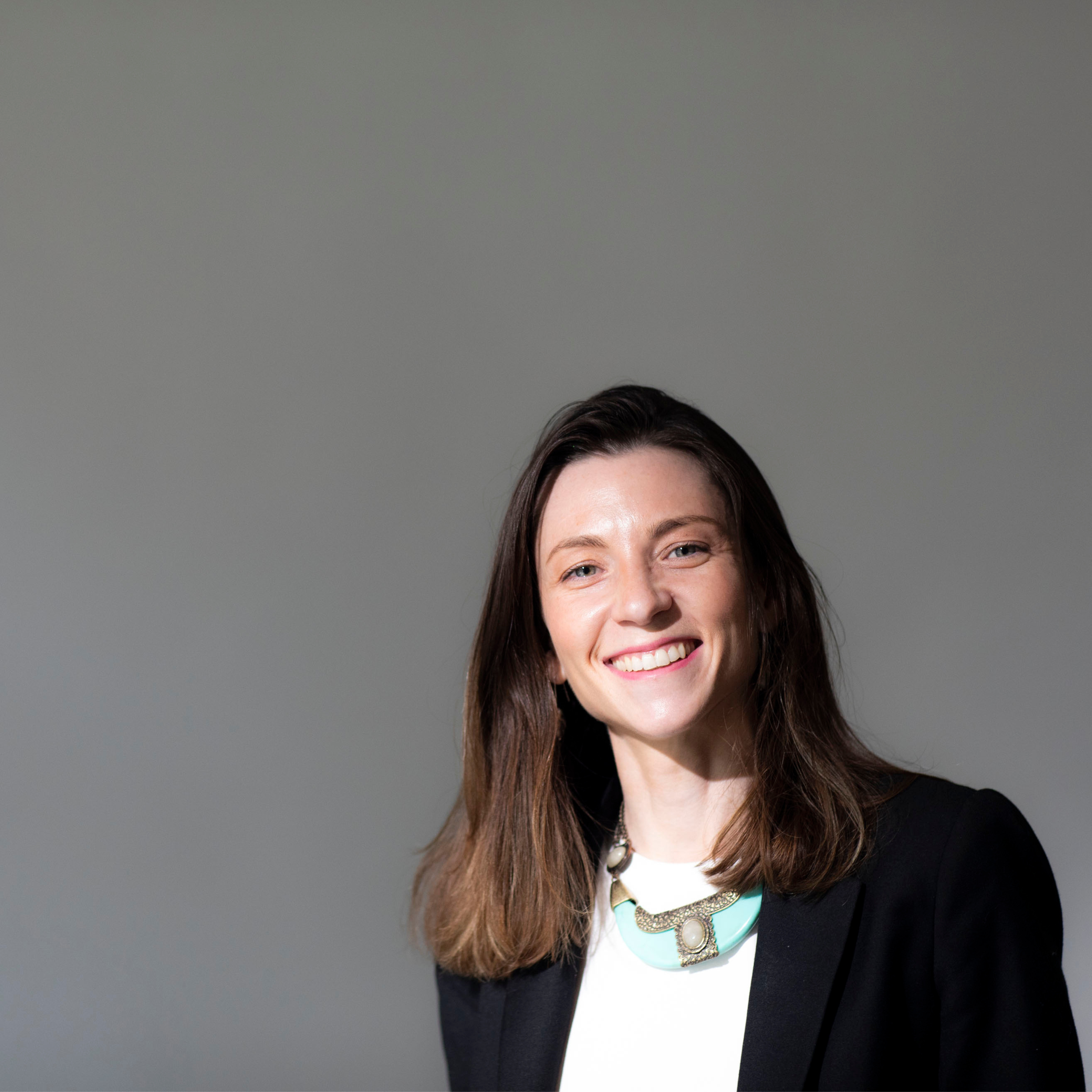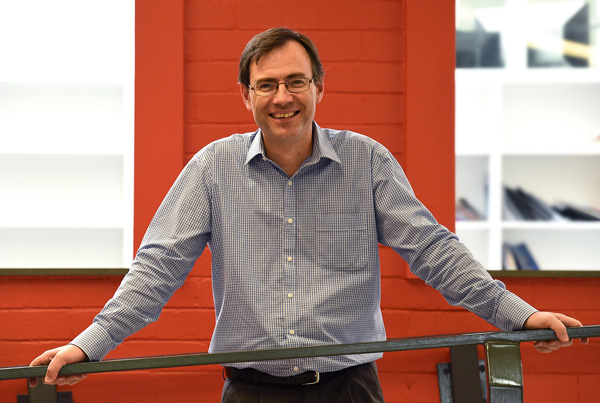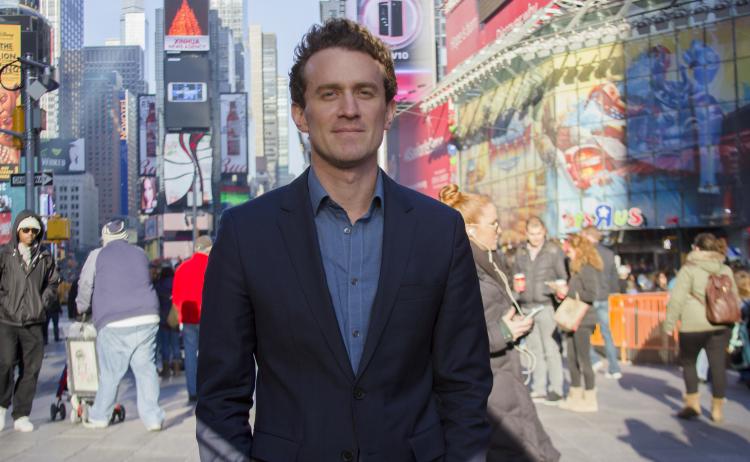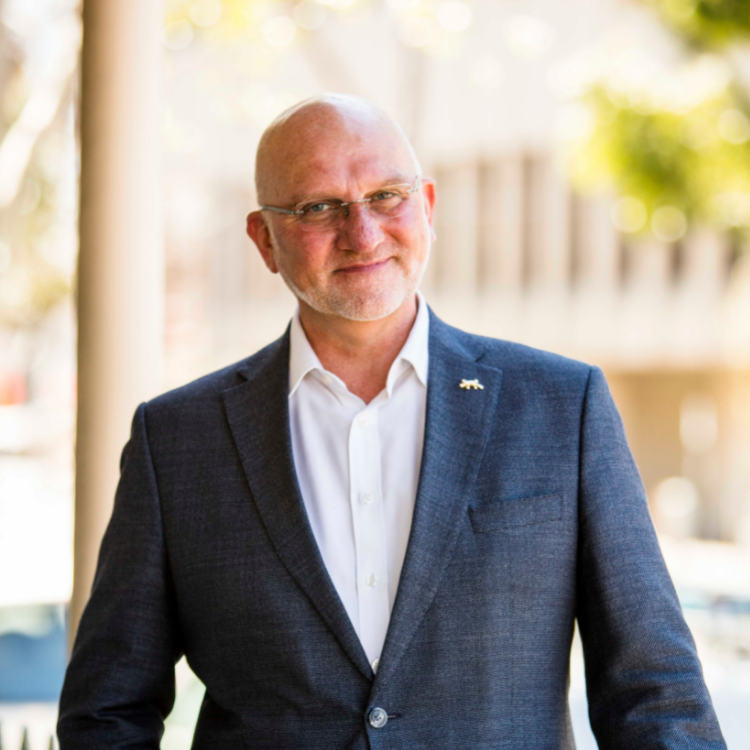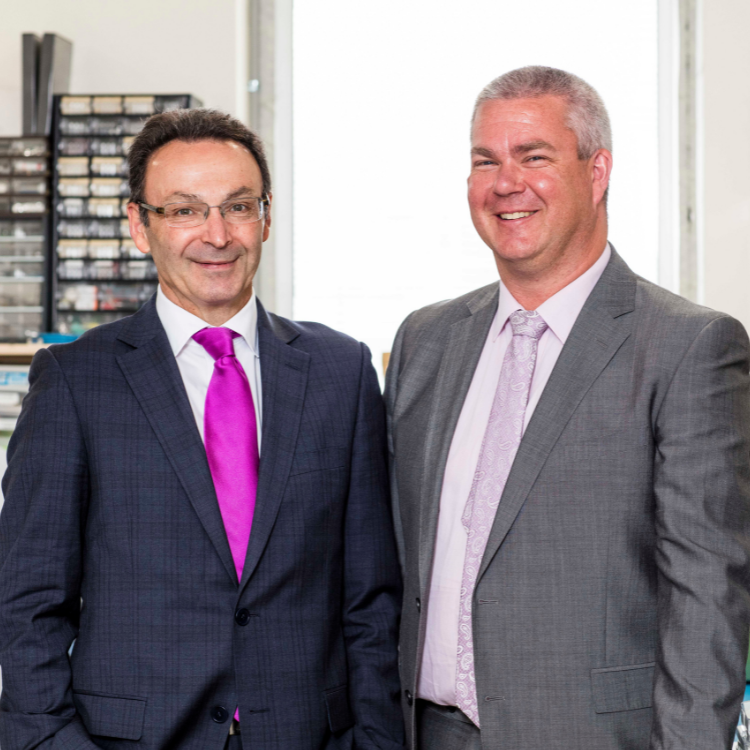Med Tech Talks
Revolutionising Stroke Diagnosis: Scott Kirkland on EMVision’s Portable Brain Scanner
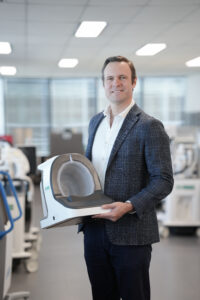
Scott Kirkland
CEO and Managing Director EMVision Medical Devices
In this episode of Med Tech Talks, Robert Klupacs is joined by Scott Kirkland, CEO and Managing Director of EMVision Medical Devices. EMVision (ASX:EMV) is an ASX listed, Australian med tech company focused on developing portable brain imaging devices using electromagnetic (EM) technology. It was spun out of University of Queensland in 2017 and had its IPO in late-2018. EMVision’s primary product is a portable scanner designed to quickly and non-invasively detect and monitor neurological conditions like stroke. Unlike traditional imaging methods such as CT or MRI, EMVision’s technology allows for bedside or on-the-go imaging, which can be particularly useful in emergency settings or in rural and remote locations to improve healthcare access. Scott has a wealth of experience in emerging tech both here and overseas, having previously been Head of Client Sales at Quantcast, a US-based technology company. He is also a member of the Australian Institute of Company Directors.
In this episode you will hear about:
More information:
Learn more about EMVision Medical Devices.
Learn more about Scott Kirkland.
*EMVision released EMView study data subsequent to this recording, see ASX release ‘Algorithms deliver excellent results in EMView study’ 12th Nov.
00:00:00 Mr Robert Klupacs Today on the podcast, we have with us Scott Kirkland, co-founder of EMVision Medical Devices. EMVision is an ASX listed Australian med tech company focused on developing portable brain imaging devices using electromagnetic technology. That’s where the EM comes from. It was spun out of the University of Queensland in 2017 and had its IPO in late 2018. EMVision’s primary product is a portable scanner designed to quickly and non-invasively detect and monitor neurological conditions like stroke and traumatic brain injury. Unlike traditional imaging methods such as CT or MRI, EM’s visions technology allows for bedside or on the go imaging, which can be particularly useful in emergency settings or in rural and remote locations to improve healthcare access.
Before joining EMVision, Scott held several senior sales positions including Head of Client Sales at Quantcast, a US based technology company. Scott is also a member of the Australian Institute of Company Directors. Welcome to the podcast, Scott.
00:01:14 Mr Scott Kirkland Thank you, Robert. It’s a pleasure to chat with you today.
00:01:16 Mr Robert Klupacs Fantastic. Scott, as we’ve discussed in the prelim, we’re so excited to have you on the call today. Some of our listeners probably already know you’re someone who has a huge wealth of experience in the emerging tech both here and overseas. And I know you’ve had a long interest in science and data. But for our listeners, can you explain your background and a little bit about your journey and then how you found yourself running EMVision?
00:01:42 Mr Scott Kirkland Thanks, Robert. Well, I’m certainly a generalist, I’m not an engineer and I’m definitely not a clinician. I do have a sales and marketing background and prior to co-founding EMVision, I was with Fairfax Media for a number of years. And after that a US tech company in the AI space called Concast. And the origins of Envision really go back to a chance meeting with a unique technology transfer manager. Her name is Jennifer George and I met her at a conference in Melbourne. And this is back in 2016 and I learned about some truly remarkable technology that was being developed by a bunch of engineers there and I needed to learn a bit more about it. So I organized to meet that team. It was led by Professor Stuart Crozier, who is now our director, sorry, our Chief Scientific officer, and Amina Bush. And there was a team about 20 engineers, PhDs, research fellows, and they were looking to work with an entrepreneur to secure funding and take their innovation out of the lab and into the clinic. So that’s, that’s really the beginning of the story.
00:02:55 Mr Robert Klupacs So what was it about that group that suddenly got you excited enough to jump in feet first?
00:03:03 Mr Scott Kirkland Well, there’s a few things. When we, when we arrived at the lab, they actually had three different prototypes of portable scanners. They had a skin scanner, a torso scanner and a brain scanner. And it was actually initially the skin scanner that drew my interest. There was a personal connection there. I’d lost my melanoma a few years prior and so the opportunity with skin scattered melanoma diagnosis really initially resonated with me. But as we did more work and we expanded, I guess our research among the clinical community, it was very, very clear that it was within the brain scanner project, particularly because of the burden for stroke, of stroke, where there was the greatest unmet need and commercial opportunity. So that’s really where we focused our energies since inception.
00:03:58 Mr Robert Klupacs Yeah. So you walked into a lab, fantastic lab, and three prototypes. At the time, did you think the prototypes were really advanced and was going to be a quick path to get them to the market, or were you realistic at the time to say, hey, these are just prototypes?
00:04:16 Mr Scott Kirkland I’m sure that there was certainly an underestimation of the amount of work to go from where it was then to where we are today. And I know everyone’s been through that journey who’s looking to commercialize early stage medtech, but we were fortunate to have, from a very early stage, have some people in our quarter that had been through the journey of developing novel technology, taking it through clinical trials, regulatory approvals, commercialisation. So there was that pragmatic lens applied as much as possible from the outset.
00:04:53 Mr Robert Klupacs And just to clarify, and we’ll come back to a bit, is the scanner on the market today and if so, which countries?
00:05:02 Mr Scott Kirkland No. So we’re running clinical studies. We’ve just completed a 300 patient trial that’s recruited at Royal Melbourne, Liverpool and Princess Alexandra in Brizzy with our EMU brain scanners. This is our first commercial unit, the bedside device, and we’re getting ready for our US pivotal trial to support a de novo clearance to begin marketing the device.
00:05:23 Mr Robert Klupacs And so how long do you, how much longer do you think that will take? Is it a year, is it two years?
00:05:29 Mr Scott Kirkland So the trials themselves, anywhere between six to 12 months and we’d be looking to make a de novo submission pretty quickly thereafter. Whilst you’re waiting on approvals, naturally you’re building out your sales and marketing functions, scaling up production, getting ready and sorry.
00:05:46 Mr Robert Klupacs To go off to take you down the pathway. But for our listeners, they always get, I think, well, getting approval is one thing. What we’ve learned is it’s the reimbursement’s the key thing, particularly in the major markets. So once you’ve got the clinical data, you’ve got the de novo approval. Is there a CPT code or is there a code that you could start selling this against straight away?
00:06:08 Mr Scott Kirkland There’s a program called the new technology Add on payment program or NTAP for those of your audience that love the acronyms. It’s offered by CMS to incentivize the adoption of novel technology. There’s certain criteria you need to meet. New device novelty, so newly approved by the fda, there’s cost criteria and you need to be able to demonstrate a meaningful clinical improvement such as reduction in diagnosis or treatment times. And there’s a number of peers in the stroke space, quite a few post processing AI tools that have managed to secure that NCAP payment. And as an example, Vizai, it’s about $1,000 per scan per patient. So it’s an added financial incentives for hospitals to adopt that product. And the view is it gives guaranteed reimbursement for up to three years and then the disease related group payments or the DRG payment buckets for stroke. And they vary depending on the severity of stroke, if it is treated or not, and if there are complications and how severe. Those payment buckets are then updated to incorporate usage of this new technology.
00:07:17 Mr Robert Klupacs That’s good because there’s a lot of technologies coming out of Australia sort of hit the wall after approval because they’ve got to generate all that, all that, all that additional data again which is expensive and time consuming. So well done.
00:07:29 Mr Scott Kirkland Yeah, look, it’s, it, it’s interesting. I do think locally there’s an overemphasis on the FDA approval milestone. Of course it’s a, it’s a huge milestone. And not every FDA approval is equivalent, can vary dramatically depending on how new the technology is. But yeah, you’re right, it’s really reimbursement and driving, driving that adoption, which is supported by clinical evidence. That’s the real game.
00:07:52 Mr Robert Klupacs Yeah. Just taking that a step further. So stroke is a really big disease. We’ve got some stats here that stroke happens every 20 minutes across Australia, which I find staggering. Can you tell us about the impact you believe your device will have for stroke treatment and stroke management?
00:08:12 Mr Scott Kirkland Sure. So the stats are staggering and the reason we focused on stroke originally is because of its prevalence. You know, one in four adults having a stroke in their lifetime and most of those do result in some form of permanent disability. The effective treatments today, there’s thrombolysis for clot busting drugs, there’s thrombectomy surgery to retrieve a clot. There’s neurosurgery options for hemorrhages. There’s also some newer evidence supporting the use of intensive blood pressure lowering for acute haemorrhage. That’s showing great promise. They require first that differentiation. Firstly, is it a stroke or not? And if it is a stroke, is it ischemic or blockage or haemorrhage of bleed? Because the treatment pathways are diametrically opposite, it’s CT today that is used, and when it’s available, it does a great job. So the challenge is, because CTs are very large, most of them are stationary. And even the mobile versions of 600 kg plus, they’re complex machines. They require specialist operators, radiographers, technicians. They’re not devices that are suitable for deployment at every bedside in rural regional communities and certainly not in every ambulance. And the evidence in stroke is unequivocal. Early diagnosis, early treatment means better outcomes for patients, less disability. That’s a truism in stroke. So we know if we can bring neurodiagnosis to the patient and we can speed that up, we can dramatically improve patient outcomes and disability outcomes.
00:09:49 Mr Robert Klupacs So is it fair to say your device is effectively a portable CT, or is there some other technology that you’ve incorporated to enable it to make it portable?
00:09:58 Mr Scott Kirkland So we use what’s known as ultra frequency, ultra high frequency radio signals, or microwave sensing and imaging. It’s not Connecticut, it’s not Mr. It’s not ultrasound. It’s more closely related to the full body scanners. You’d go through the airport where you put your arms down and they send signals into your clothes looking for hidden objects.
00:10:21 Mr Scott Kirkland So it’s non ionizing, it’s non invasive. But we are borrowing a lot of our hardware, our antennas from the communications industry, and that’s allowed us to build really mobile, really portable devices. So that is a key element of our value proposition. The emu, our first commercial unit, is a bedside scanner. The physical footprint is about the same size as a cart based ultrasound system. And our second product, following closely behind our first responder device, a lightweight helmet. It’s about 10 kg. And because of the safety profile, we’re not ionizing radiation. Any healthcare professional with the appropriate training can operate our devices. And that means we can envisage a scenario where paramedics are attending a suspected stroke. They’re carrying in our device in a backpack. They’re running the scan, takes a couple of minutes at the scene. They’re sending our diagnostic output to a NEUROLOGIST via telestroke. And then they’re guiding that critical decision making. And that might be a triage or transfer decision or ultimately certainly where we are heading is we want to open the door to infill treatment. And the objective there is to treat more patients in the golden hour. So that’s the first hour from the onset of their stroke and that’s the opportunity to have the greatest positive impact.
00:11:44 Mr Robert Klupacs Amazing. Just to change tech a little bit, we talk a lot in this program about, you know, you start with an idea, but then you need a huge amount of collaboration. Medtech development needs a lot of different inputs. As we start at the beginning, you walk into the lab and you thought, fantastic, this is really interesting. But along the way, what have been some of the challenges you’ve encountered and how have you and your team liaged with specialists, paramedics, engineers to ensure the user feedback and patient feedback is incorporated in your design? And if you look back now, 2024, what would you do different in your, in your development pathway that you think, oh God, if only I knew that now, I would have done it then?
00:12:29 Mr Scott Kirkland I think the challenge for us or any medtech developers is making sure you’re building something useful, critical. It’s not going to live in a cupboard and collect dust. And so we, even before we turned up at Unique UQ Back in 2016, the research team were working with some clinicians at the Princess Alexandra Hospital very closely. And we continued that relationship. And there was a huge amount of feedback that was obtained from those clinicians, many hours in their simulation room, finessing, usability and workflows. I think even one of those clinicians is a co inventor on one of our patents. So they’ve been heavily involved in the design and development of the products. But that’s not to say there weren’t significant, there wasn’t significant innovation required to get from a proof of concept device to a device suitable for manufacture, for commercialization that’s robust, reliable, scalable. So to arrive at that point, there’s a technology partner of ours and a supplier called Keysight Technologies. They manufacture the components that sit behind our antennas. If you think of our system, there’s a headset, there’s antennas in our system which send and receive signals, the antennas. Think of them as the eyes of our system. And then there’s a measurement component, we call it a vna. It’s a measurement component that sits behind those antennas to measure the signals. Think of it as the brains t side of the manufacturer of those brains. And the original Component was a large box. It was a bit like one of those 1990 Dell PC towers that take up your whole desk. And that’s what we started with. And it did the job for proof of concept that we could scan and make sense of these signals and differentiate stroke parts in an early study. But it certainly wasn’t suitable for a commercial product. It was far too cumbersome. We had a headset with an umbilical cord of cables connecting the eyes and the brains. And the headset was heavy, it was over 15kg. You certainly wouldn’t want to drop that on the patient’s head. And we needed to get that an articulated arm and strip out a whole lot of weight and componentry that we didn’t require to, to ultimately improve our margins as well. So we signed a deal with Keysight back in 2019 to provide the technical input we required of what a smaller component would need to do. And they did all the RD to bring it to life. And a few years later we had this massive box with two four boards essentially miniaturized that now live in our headset.
So we’ve got the eyes and the brains of our system very closely together. That was a key element to going from proof of concept viable commercial unit. But you asked me that question, what would we do differently? The early part of our life we had a number of R and D contracts back to third parties. And over time we built up our own in house product development team. We have about 40 staff between Sydney and Brisbane. I think the only thing we’d do differently is start, start that journey a little earlier.
00:15:45 Mr Robert Klupacs Right. That’s a good insight. Mind you, you needed, you need the money to do that, I suppose.
00:15:50 Mr Scott Kirkland Correct. Exactly. Exactly. I had to get, get through some original proof of concept hurdles to then access the funding to build out that team.
00:15:57 Mr Robert Klupacs Yeah. You mentioned earlier you, you’ve got some interesting clinical data recently. I think there was the results in May from the stage two interim study that you’ve. You spoke about. I think the study, we understand the trial was done through emergency departments at a few sites across the country. Can you tell us what the findings were and what next you need to do?
00:16:20 Mr Robert Klupacs And I’m intrigued. What was the control, for one of a better term, did you have to compare it to the actual CT results that the patient got compared to what you had?
00:16:31 Mr Scott Kirkland Yeah. So every patient that we scan with our EMU device is getting standards of care, ground truth. So we’re scanning when I say we, the research teams and most of our scans in this study that’s recently being completed were conducted by nurses. We’re scanning immediately after assessment and after CT, but before any treatment or intervention.
There’s a very narrow window there. And we have used the data to, we have a series of AI diagnostic algorithms that make sense of our signals and we’ve been using the data to advance those algorithms. And there’s elements of training and then testing those algorithms and we compare to the reference diagnosis, so the totality of the radiological findings and the report from the clinician as well.
And in our early insights, and we have more data to report this month, our early insights showed a really nice ability of our technology to differentiate patients with haemorrhages and those without patients with ischemia, so blockages and those without and differentiate those from non stroke events. So we’re also enrolling mimics.
So any patient presenting to the emergency department with suspected stroke, and many of these patients have migraines, seizures, brain tumors, conditions that can present like a stroke but are not actually a stroke. So really encouraging early insights as it relates to our ability to differentiate stroke from non stroke and stroke type.
And recently we met with the FDA to firm up our protocol for our validation trial. Think of it as a pivotal trial to support a de novo clearance. We’re expecting to enrol around 300 patients across five or six sites skewed to the US this month. We’re traveling to a number of our US centers.
We’re getting things ready, carrying out preliminary device training and you know, I think we’re really fortunate to have some of the leading minds in stroke care involved, involved with those studies. And as soon as we have all our contracts signed, we’ll, we’ll be naming those sites.
00:18:41 Mr Robert Klupacs Fantastic. In terms of your market, what I’m interested in is what will be the channel, the marketing channel. So will you be putting this into the paramedic setting? Will you be putting it into rural, rural hospitals? Will you be putting into aged care homes, for example, where I think there’s a much higher risk with age of strokes occurring, or will you be putting into major hospital ed departments or all of the above?
00:19:04 Mr Scott Kirkland Yeah. So focusing on our EMU first, so the bedside scanner, where we’re focusing on all those environments where neurodiagnostic information is required, but there are no tools currently available. So we’re not trying to replace the CT or Mr. But fill a gap where the only alternative may be physical observation of that patient or imprecise tools like Glasgow Coma Scale, stroke scales.
So in that scenario there’s really two settings and they’re both at complete opposite ends of the resourcing spectrum in a rural or remote setting. And this also applies there’s a huge tyranny of distance in Australia, but Even in the US there’s around what’s called 1300 critical access hospitals. And these are very small clinics that may or may not have a ct, but they may not have a radiographer to run that CT 24 7.
And of course urologists and radiographers do not grow on trees and they’re seeing suspected stroke patients and they need to make some pretty quick decisions what they do and often they can’t treat that patient directly at their center. They need to transfer. Do they go to the next largest hospital, do they go further directly to a comprehensive stroke center?
Because that patient may require specialist intervention, for example. So in that setting it’s informing that upfront decision making. But in a large tertiary hospital that may have quite a significant ICU or stroke ward, there will be scenarios where there are patients that are very unwell, they are at risk of deterioration and they may be on a whole host of life support equipment.
They could be on ecmo. It may be very challenging to transport these patients down to radiology for follow up imaging in those scenarios, clinicians, neurointensive astrologers want to keep a closer eye on those patients and spot those complications, whether it’s a post operative stroke or hemorrhagic transformation much earlier. They may still eventually get sent for an Mr.
Down at Radiology, but it’s certainly much more information than they can currently access at the bedside today. So that’s the EMU for the first responder device. Very much pre hospital emergency services. Road and air in the US there’s a about 60,000 rodent air ambulances. Locally we have a study planned for early in the new year with the Royal Flying Doctor Service, a couple of state ambulance services and we’re collaborating with a group called the Australian Stroke Alliance. So that’s kicking off early in the new year.
00:21:38 Mr Robert Klupacs And in terms of the revenue model, I’m assuming you’d be selling the units, but will you be also selling services or analytical services alongside of it or is it the model that you’ve got will make it, get it FDA approved, show it can have the economic benefit that you spoke about or clinical benefit and just be selling it into the to the areas that you just spoke about.
00:22:02 Mr Scott Kirkland So we’re looking at the traditional capital equipment model. We have the scanners and we’ve talked about a targeted price point of around 150,000 USD for the EMU scanner, which is certainly much cheaper than CT or Mr. And puts it in the similar price bracket to mid to high range ultrasound. We have a series of consumables. There’s within our headset there’s a silicon membrane that inflates and deflates to accommodate different head sizes. And within that membrane it fills with a gel like substance that is similar to ultrasound gel which helps couple our antennas to the head. That’s a proprietary liquid that will be part of our consumable program along with disposable CAP for infection prevention and then service contracts.
We expect to charge around 10% of the cap equipment per annum. For some markets we expect to offer a subscription model. We know places like the UK prefer managed equipment leasing models where they may acquire the device, consumables, training service, everything in a bundled monthly fee. So we need, I think the bottom line is we need to be flexible depending on which market we’re operating in.
00:23:15 Mr Robert Klupacs Listening to those numbers, it’s a potentially very, very large TAM for you if you get this successful.
00:23:21 Mr Scott Kirkland I would suggest if we achieved 10% of the TAM, we would be a very, very large organization.
00:23:29 Mr Robert Klupacs Yeah, I’m sure you will be. You’ve had some great success. I mean we mentioned earlier you were listed in 2018 and I know you’ve done further capital raising since then. And more recently you mentioned keysight Technologies, getting access to their technology, but they also put $10 million into the company to purchase a strategic stake. So you’ve done pretty well in terms of capital raising. But I’m sure it hasn’t all been easy sailing. Again, a lot of our listeners are in that journey of trying to raise capital themselves. Love to hear your insights in how you’ve gone about it because you appear to have gone to the ASX public markets much earlier than most.
00:24:08 Mr Scott Kirkland Yes, so. And it’s an interesting one. We did list very early in our journey and it’s certainly not for everyone. I would suggest overall it’s been a positive experience when we have raised capital. We have always done it at a significant premium to the previous round. A big part of our funding strategy has been non dilutive grant programs. So that’s always been the first priority, whether it’s a federal or state scheme focused around medical research or retaining domestic manufacture of medical devices. We’ve had a keen eye on these programs from the outset. The Keysight strategic investment. So it was, yeah, US 10 million, about 15 mil Aussie that was a long journey. You know, we’ve been working together for over five years from the first conversation to inking that investment was probably about 12 months. And so if you’re an unknown entity and you’re looking for a strategic investment from a major corporate, I think everyone knows this, but it takes a serious amount of time, whether they’re investing $10 million, $100 million, a billion dollar acquisition, they just have a process they have to go through.
So you really need to start those relationships early on. Even if you’re far too early for them to make an investment. Just socialising what it is you’re doing and raising that awareness has value.
00:25:49 Mr Robert Klupacs Your first conversation isn’t going to get you money, but you need to start the conversation and be prepared to develop the relationship. Is that seems to be what you’re saying? And that’s what everyone else in this podcast has been advising our listeners that just don’t go out there and expect you’re going to get money after the first meeting. It might take you 20 rounds of discussions and might take you two or three years because they’re waiting to get it to a certain point before they can put their money in from their internal processes. And it’s frustrating when you haven’t got the money, but if you’re not prepared to put the relationship in, you don’t get it.
That’s what everyone else on the podcast is saying. And I guess you’re saying the same thing.
00:26:24 Mr Scott Kirkland Yeah, well, if I was meeting someone for the 20th time and they still weren’t putting funds in, I’d probably be scratching them off my list.
00:26:33 Mr Robert Klupacs We’ve had a couple of people. We had one person talked about 200 visits with somebody, so.
00:26:38 Mr Scott Kirkland Okay, well, yeah, I mean, look, you know, if a small startup, finite time, finite resources, you do need to prioritize. But even with the grant programs, it’s not an insignificant amount of work to create a competitive grant submission. It’s a huge amount of work, but there’s a number of programs that you can leverage, content you’ve created, whether it’s health, economic analysis, whatever it may be. For one grant scheme, there’s a whole lot of content that you can leverage for others to try and make that process as efficient as possible. So, yeah, I’m sure your listeners are familiar with all the federal and state grant schemes, but I think one of.
00:27:24 Mr Robert Klupacs The challenges that’s come out, we talk primarily to Australian people, but we’ve had a couple of people now from the US on, and there’s a lot of capital in the grant system, particularly government system in the United States which is available to Australians. Have you been able to get international grant support?
00:27:43 Mr Scott Kirkland So we are certainly looking at some international opportunities. Without getting too specific, the US military put out requests for information or proposals around solutions that can solve what they describe as warfighter health challenges. So such as the assessment of traumatic brain injury in the field. They have some huge programs over there. So yes, it’s definitely something on the radar.
00:28:12 Mr Robert Klupacs Interesting. We’ve got a good time for a little few more questions but one that we really wanted to ask you and we ask everyone that comes on. A lot of our guests talk about Australia being a risk averse country when it comes to supporting early stage concepts. It’s a bit controversial. Not everyone necessarily agrees with that statement. But what’s your thoughts on that statement one and your thoughts on a strange general demeanor with regards to failure in medtech for want of a better term and love to get your thoughts about if you think there’s an issue, what we can do better.
00:28:47 Mr Scott Kirkland Yeah, I think I’d be in the category of not necessarily agreeing with that risk adverse statement and that kind of links into our early discussion about the public markets. And certainly at the smaller end of town, the micro cap, small cap, there’s a huge amount of early stage biotech and medtech listings. Now not everyone had a great journey but there’s still plenty of funds being raised in that end of the market. And these are pre revenue, pre fda. Some are even phase one or early proof of concept. So you know that could be a byproduct of a smaller VC community. It could be a cultural legacy thing which you know, if you look to the resources sector invest is there and the resources sector in many ways you could argue has a similar risk reward profile to the, to the life science sector.
Investors there have a history of taking a punt on a couple of blokes with a ute and a drill driving around the outback trying to find minerals out at Dingo Creek. So you know I think there is, I think there is strong support for early stage innovation here. I think I’m sure you better, you’ll know this better than I but I understand as it relates to IP generation in the life science sector we globally, we punch above our weight.
I think the criticism is often that we don’t capture that commercial value and people will point to companies that are taken out very early. They might be sold for a few hundred million dollars which looks like a success. But the claim is there’s billions of dollars of value left on the table. All I would say is there’s enough aspirational peers out there to show that companies can go alone and create significant value.
Whether it’s nanosonics, prometicas, polynovo. It can be done. So yeah, that’s all I can say. It can be done.
00:30:48 Mr Robert Klupacs No, I agree with you. It’s sometimes just finding the right people at the right time, but there is money there. It’s just sometimes the story that’s sold to those people isn’t very good because it’s too tech driven rather than making money and making improvements. That seems to be the issue that’s come out of our podcast series over the last couple of years.
00:31:08 Mr Scott Kirkland Very much agree with that. I very much agree with that. And you know, if, if, if someone looking to raise money early on is, is focusing their pitch all around the cool technology, not, not the problem that needs solving, it. It’s unlikely to resonate with potential funders and it’s going to be tough.
So if you want to create lasting value, I think you’ve got to focus, really hone in on that problem you’re solving. And it is much better to focus on a niche with no competition then try and go after a massive market full of competition.
00:31:40 Mr Robert Klupacs I think that’s going to be the quote that we’re going to put on the notes to this podcast. I love that. That was a great line. A great line. Okay, just quick question for you before we come to one more but one that’s just emerged. You mentioned earlier that you were looking for FDA approval. There’s some studies you need to do to get that pivotal, pivotal study done to make that happen. Clearly the United States is going to become a major market for you. You’re domiciled in Australia at the moment you mentioned you’ve now got a team internally of 40 people. Do you think you can keep the business running from Australia or do you think you’re going to have to make some hard decisions about moving a significant or all of the business to the United States at some point in the future?
00:32:26 Mr Scott Kirkland So from a manufacturing perspective, I strongly believe we could retain manufacturing locally. In fact, we’ve established a pilot production line for our EMU device in Macquarie park in Sydney. And that line has a maximum capacity of about up to three the build, test and release of up to three units per week, which if you look at our price point, you know that’s about a $35 million or so annual capital equipment revenue opportunity.
And to grow that small space, more storage and warehousing, small production technicians. We believe there’s enough margin in our product where it’s not necessarily about chasing the cheapest labor options around. And certainly because of the quality standards required, the medical devices, it’s something we want to keep really tight control of. And it’s.
And there’s a number of advantages of having that manufacturing line alongside an R and D and product development team. But there may be certain components, such as the consumables, that we may use contract manufacturers for in the States, for example, rather than trying to ship a whole bunch of liquids halfway across the globe.
In terms of the go to market, we are expecting to work with a distributor and North America initially, but there will be a sales function to support that. Right. So if we do go down that path, we will still need a sales and service support function. But there’s obviously a lot of work to identify the right distributor within that distributor, who is, what’s the right division, who’s suitably incentivized and aligned and is going to do a great job selling your product.
Because working with any of the global names, there’s no guarantee of success. And there’s plenty of, plenty of peers that have had great experiences and others that haven’t. So there’s a lot of work, in my opinion, to go through before those arrangements are in place.
00:34:35 Mr Robert Klupacs Well, that’s good. I didn’t know about the manufacturing in Australia. I know a lot of politicians who do listen to this podcast. We’re very happy to hear that, actually. So congratulations.
00:34:44 Mr Scott Kirkland Oh, well, it’d certainly be easier to keep it here for the next couple of decades with more, with more grant support. So don’t get me wrong.
00:34:56 Mr Robert Klupacs Well done. You grabbed the line very well, Scott. Well done. Last question for you. What are the key themes on this? And it’s changing tack a little bit, but I think it’s, I’m really keen to hear your answer to this one. One of the key themes of our podcast has been the power of mentorship.
I know our listeners love hearing about people like you who have done what you’ve done, but they’d like to know how you’ve got there and who were the guides that you had along the way. And then the second question just linked to that is what do you, how do you, when people approach you, what do you suggest they look for in their own mentors?
00:35:35 Mr Scott Kirkland So I’m big on learning from aspirational peers. Those have been through the journey, created new technology, gone from prototype to products, gone through clinical trials, FDA approvals, and created sustainable, profitable businesses. Personally for many years I worked with, with alongside Ron Weinberger, who in a past life was CEO of Nanosonics. And the benefit of that relationship is Ron had been through that whole journey.
So he’s, and he, and he describes scraping his knees many, many times and perhaps there’s some more colorful language than that. But you know, his foresight, his hindsight rather became my foresight. There’s other people that have been generous with their time that I can’t say a mentors as I may have only met them a couple of times, but I’ll give it like Sam Huppert, CEO of ProMedicus.
He’s someone who’s very generous with his advice, particularly around entering the US market and strategies for managing that. What I will say for any young innovator seeking a mentor is firstly, you may be surprised how accessible some of these people are and how generous they could be. And if you can’t get, obviously the ideal way of getting in touch is a mutual introduction.
But if you can’t get that even through LinkedIn, it’s a platform where you can send a direct message to the CEO of a multi billion dollar company and they may or may not respond. There’s, you know, but you may be surprised at who does respond. But what I will say is when you are reaching out to me, if you’re, if you’re, because you’re asking for mentorship upfront, that might come across as a big ask, a big time commitment.
The people you’re likely reaching out to are going to be very time poor. So I would suggest to see if you get an initial coffee with them, learn about their journey, pick their brain and then if you find you both get on well, you may get lucky and they’re willing to catch up more frequently.
00:37:37 Mr Robert Klupacs Fantastic advice. I’ve got to say, Scott, I’m really looking forward to seeing the next stage of the EMVision journey. I think you’re going to be a powerhouse success story for the country. I know there’s a few years to go yet, but wow, what you’ve, what you’ve outlined today, I think a lot of people aren’t aware and I hope they will be more aware of your story after this podcast.
00:37:57 Mr Scott Kirkland Thanks, Robert. Yeah, it’s been my pleasure.
00:37:59 Mr Robert Klupacs Yeah, let’s see how it plays out. But we’re going to watch you very closely. We are so thankful for you giving us the time because I know how busy you are as well and particularly all those insights you gave about the journey, what you’re trying to do, how, what you can do for people with stroke.
It’s amazing what you might be able to achieve for a long time for a clinical benefit. And it’s fantastic to hear that you’re being able to develop an industry potentially that’s going to lead to large scale manufacturing from Australia for the world, which is wonderful to our listeners.
00:38:32 Mr Scott Kirkland That’s the goal.
00:38:32 Mr Robert Klupacs Yeah. Yeah. To our listeners. I hope you’ve enjoyed listening and I look forward to introducing you to other guests in future podcasts. There are links to everything we’ve talked about in the show notes and we look forward to welcoming you next time.
Listen to other episodes of Med Tech Talks here
